The Panasonic Z95B is a piece of equipment that makes it hard not to raise your eyebrows in delight. From the very first moments, it's clear that we are dealing with an absolutely exceptional screen, capable of bringing out everything that’s best in films and games. The black levels are perfect, brightness in HDR is stunning, and the colours – whether in film mode or games – show that Panasonic's factory calibration has reached a level that other manufacturers can only aspire to. Adding to this are the fantastic sound from the built-in soundbar and excellent viewing angles, giving us a television picture that, in terms of image quality and audio-visual immersion, seems to be complete. However, the longer we used it, the more it seemed we were dealing with a split device. On one hand, it acts like a reference monitor, ideal for evaluating video materials and indulging in the pure pleasure of films or series, even gaming; on the other hand, it is a television that can disappoint in its everyday functionality. FireTV in its current version can be frustrating, there are significantly fewer applications than the competition, some simply do not install at all, and the system can stutter quite a bit. Additionally, there are strange system issues, such as the lack of support for basic subtitles in films from USB – these may seem like trifles, but they contribute to the picture of a device that, in daily use, is far from perfect. And here lies the greatest paradox of the Z95B. It is a television that probably offers one of the best images currently available in showrooms, and at the same time, one that is difficult to recommend as a typical "television" without reservations. The competition, although often visually slightly weaker, is simply more user-friendly and costs significantly less. Therefore, the Z95B is a proposition for image purists, for those seeking a reference screen and who are willing to accept all the compromises associated with the other non-functioning features. For them, it will be a dream device. For the rest – a demonstration of Panasonic's power and rather a form of curiosity.
- Matching (Score)
- Our verdict
- TV appearance
- Where to buy
- Contrast and black detail
- HDR effect quality
- Factory color reproduction
- Color reproduction after calibration
- Smoothness of tonal transitions
- Image scaling and smoothness of tonal transitions
- Blur and motion smoothness
- Console compatibility and gaming features
- Input lag
- Compatibility with PC
- Viewing angles
- TV efficiency during daytime
- Details about the matrix
- TV features
- Apps
- Playing files from USB
- Sound
Panasonic Z95B vs Samsung S90F QD-OLED
Direct compare
S90F / FAT / FAE
Available screen sizes: 65”
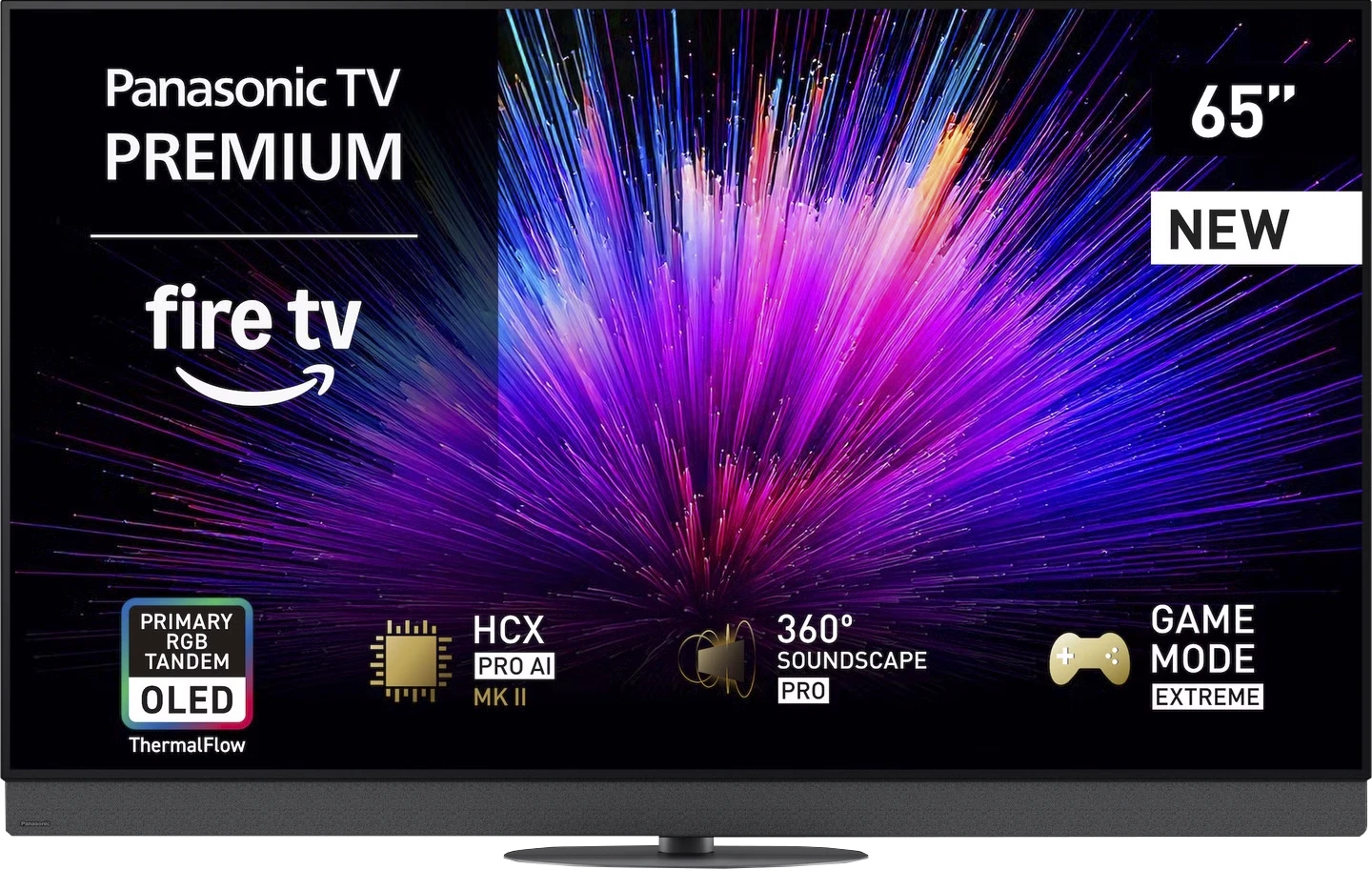
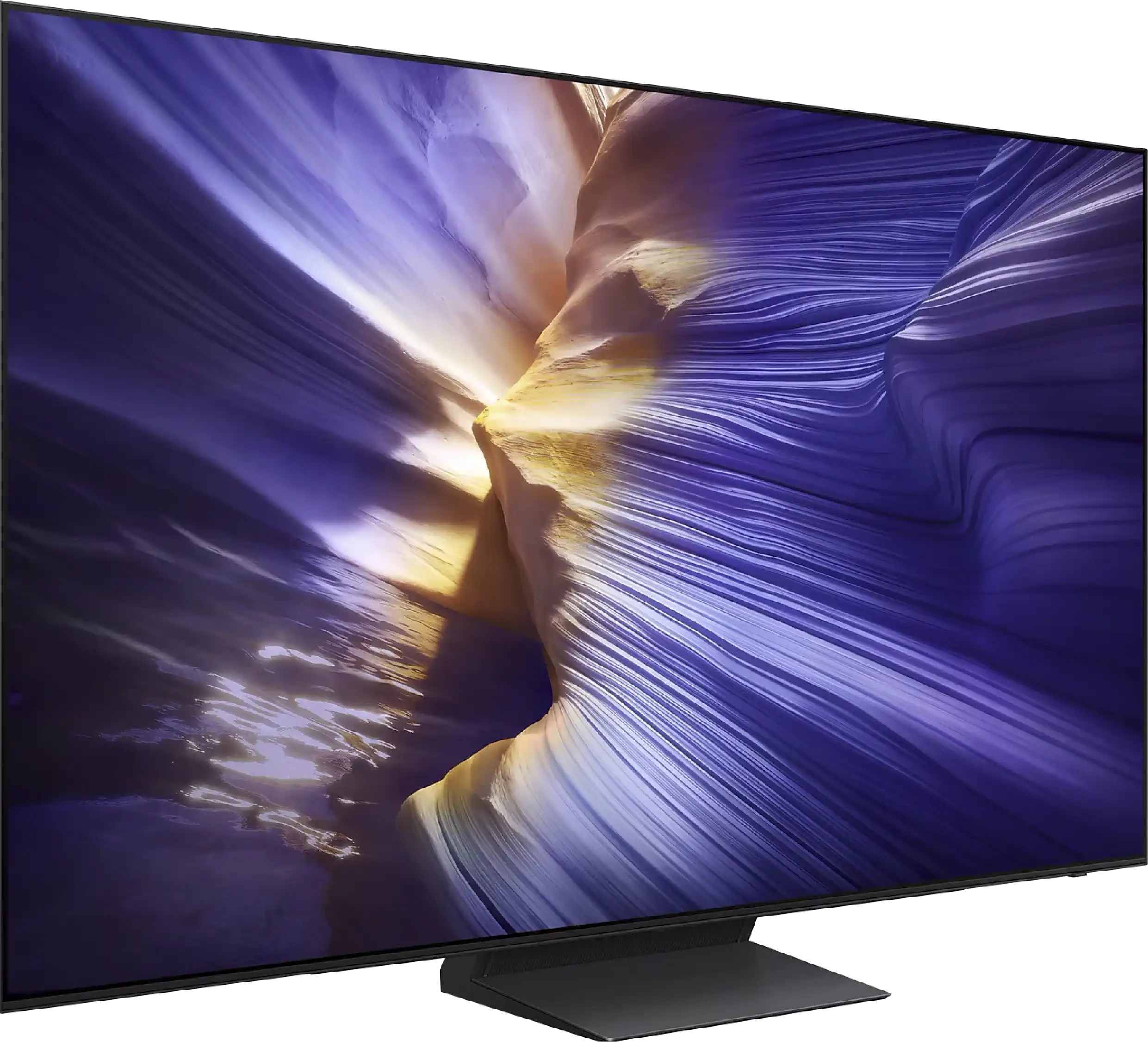
Panel type: WRGB OLED
Resolution: 3840x2160
System: Amazon FireTV
Model year: 2025
Complete the survey to find out the result

Panel type: QD-OLED
Resolution: 3840x2160
System: Tizen
Model year: 2025
Complete the survey to find out the result

Overall rating
8.5
8.4
Movies and series in UHD quality
9.0
9.0
Classic TV, YouTube
8.8
9.3
Sports broadcasts (TV and apps)
8.5
8.9
Gaming on console
9.6
9.8
TV as a computer monitor
8.6
8.6
Watching in bright light
7.4
5.7
Utility functions
6.8
7.7
Apps
7.2
8.7
Sound quality
8.9
7.4
Complete the survey to find out what fits your preferences
Advantages
Amazing black
Incredible brightness - over 2000 nits in HDR
Factory colours almost reference-level
Support for multiple HDR formats including Dolby Vision and HDR10+
Phenomenal motion smoothness - OLED panel, 144Hz
Great choice for gamers, HDMI 2.1, VRR, ALLM, Dolby Vision Gaming and HGiG
Good compatibility with PC - 144 Hz, G-Sync and FreeSync
Very good sound from the built-in soundbar
Decent viewing angles
QD-OLED panel with remarkable black levels and contrast
Very high brightness for an OLED in this segment (around 1700 nits)
Excellent HDR effect and wide colour gamut coverage thanks to the use of quantum dots
Perfect viewing angles – the picture looks great even from the side
Effectively reduces reflections in bright living rooms
Stunning motion fluidity – 144Hz OLED panel
Full set for gamers: HDMI 2.1, ALLM, VRR, Game Bar, low input lag
Intuitive and fast Tizen system with a large app base
Good sound quality for a television + support for Dolby Atmos
High build quality and slim design
Disadvantages
Fire TV – no app, strange errors, untranslated menu
No support for DTS:X
No option to enable external subtitles from USB memory
Only two HDMI 2.1 ports, which is definitely too few in this class
Price clearly higher than the competition, which often lacks such system issues
In very strong daylight, black can tend to shift towards blue (characteristic of the QD-OLED panel)
Lack of support for DTS:X (a problem for Blu-ray enthusiasts)
No USB recording function from the built-in tuners
Why don't we find such a panel in all sizes?!
Our verdict
The Samsung S90F in the 65-inch version is a television that demonstrates the significant leap in quality that can be achieved with the use of a QD-OLED panel in a mid-range model. Compared to other variants, the S90F stands out as the best – it offers not only perfect blacks and infinite contrast like other options with a WOLED panel, but also noticeably higher brightness and a wider colour palette. This results in more impressive HDR, deeper colours, and smoother tonal transitions, which are impressive in both cinematic productions and in gaming or sports. In everyday use, it is an incredibly versatile television: it easily fits in as an entertainment hub in the living room, a large monitor for PC gaming, or simply a screen for evening film sessions. The Tizen system operates swiftly here, offering a wide selection of applications and integration with SmartThings, delighting those who like to have their smart home under control. Gamers receive a full suite of modern features: four full HDMI 2.1 ports, VRR, ALLM, a Game Bar with additional enhancements, and, most importantly, a remarkably low input lag. Additionally, there is the characteristic pixel response speed of OLEDs, which makes sports and games look simply outstanding. The S90F also defends itself in terms of design: slim bezels, an aesthetic finish, and a panel that resembles a sheet of glass all contribute to its appeal. The only significant limitation to keep in mind is the behaviour of blacks on QD-OLED panels in very challenging, heavily sunlit conditions. In such situations, it can slightly "light up," resembling a dark cherry colour rather than ideal black. However, in the evening, when most of us sit down for films or series – the problem disappears entirely. And then the S90F showcases its full capabilities, providing an image that can confidently be compared to televisions twice its price. This is precisely why the Samsung S90F in the 65-inch version can be called the most cost-effective OLED of 2025. It is a model that combines outstanding picture quality, versatility, and an affordable price in the mid-premium segment. If you are looking for a television that performs well in films, gaming, sports, and everyday viewing, yet you do not want to spend a fortune on absolute flagships – it is hard to find a better choice today.
TV appearance
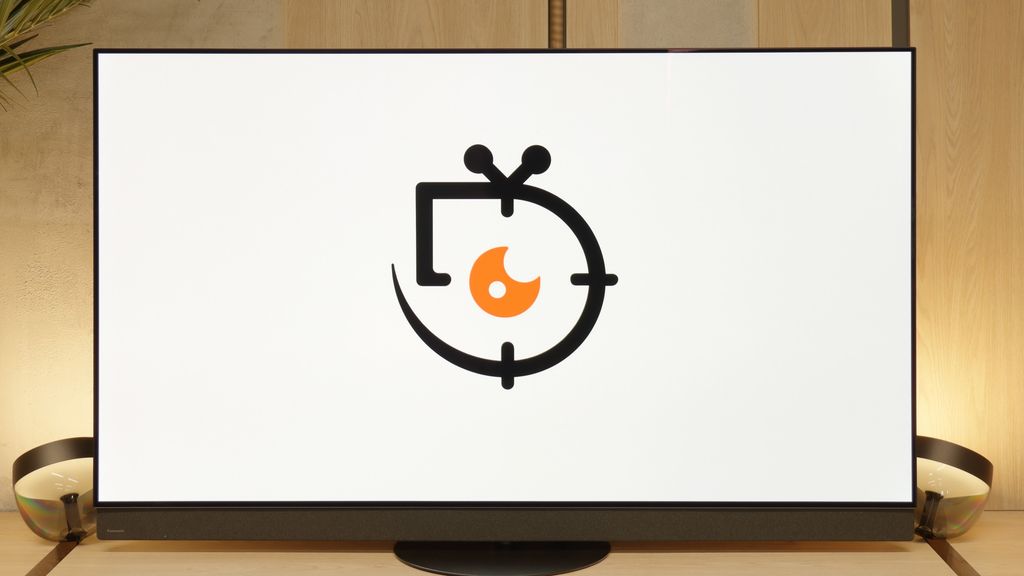
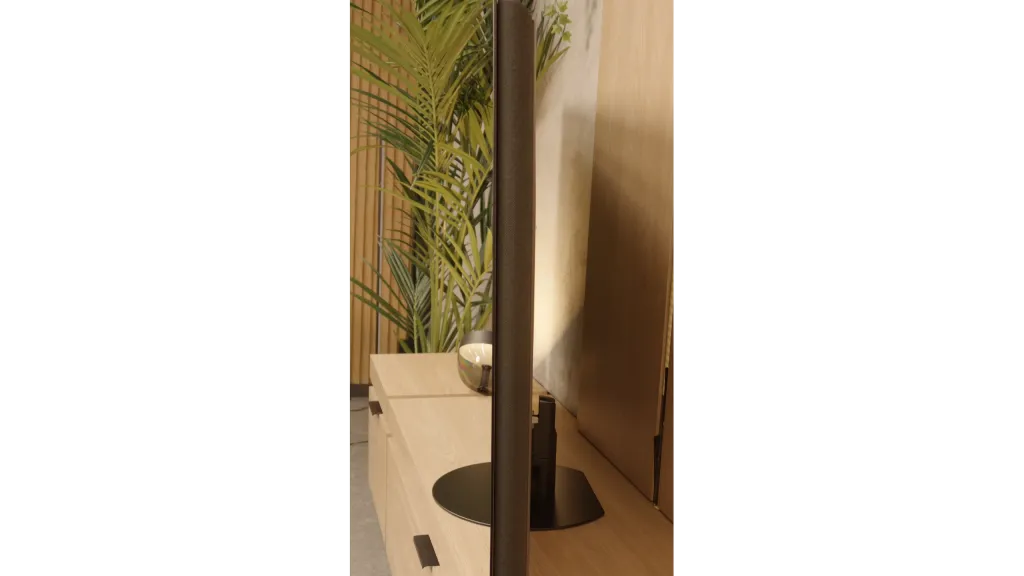
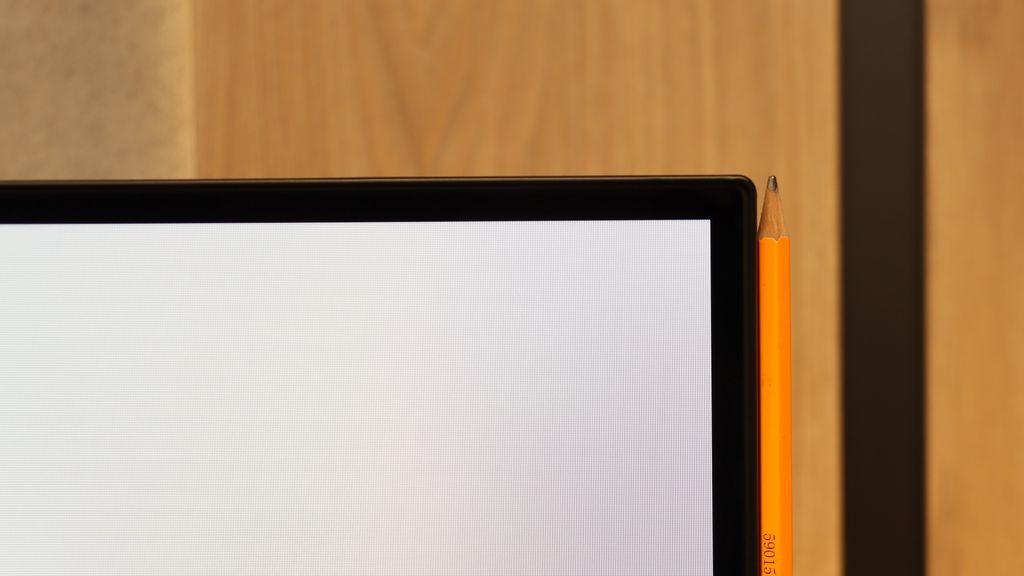
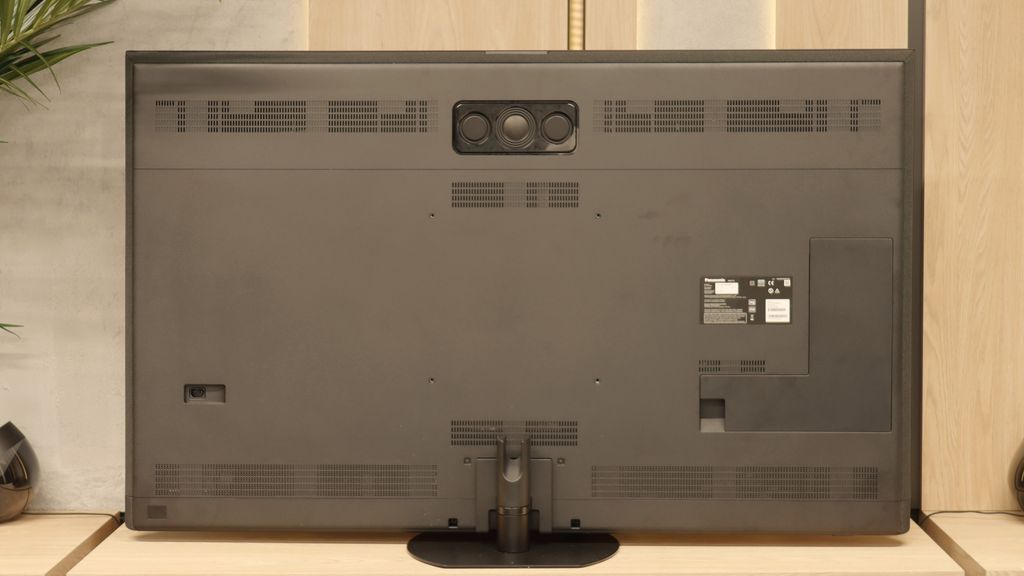
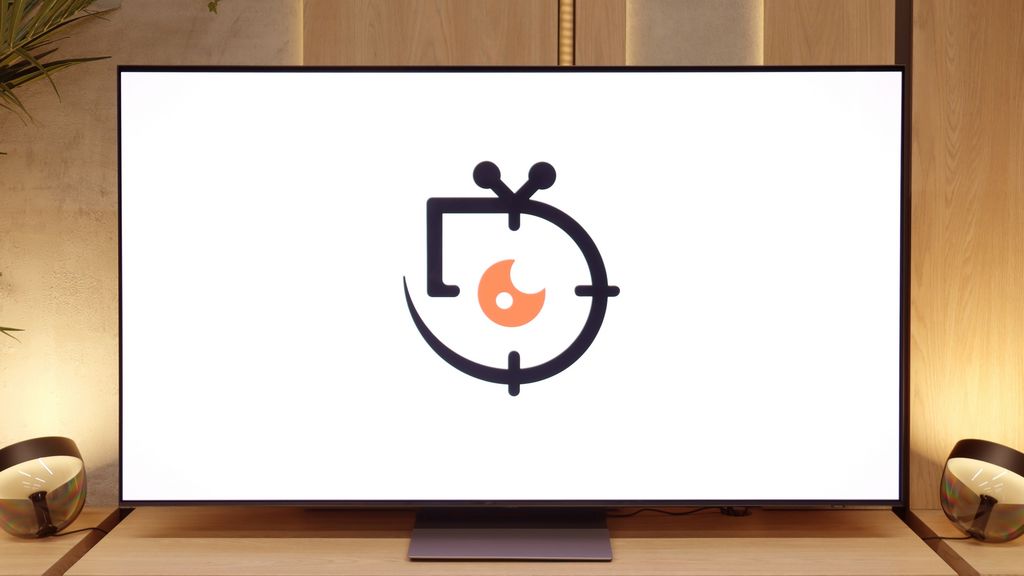
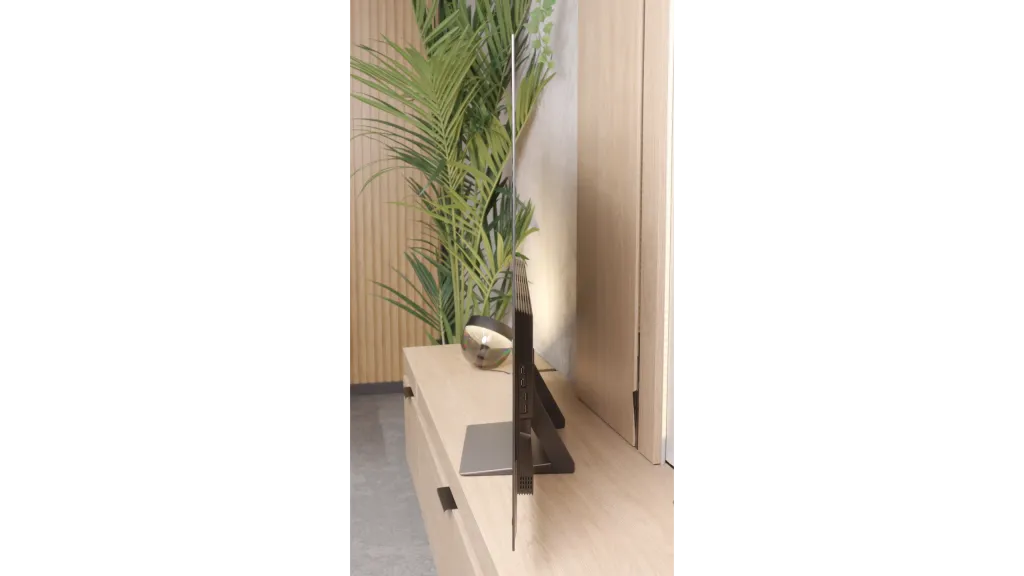
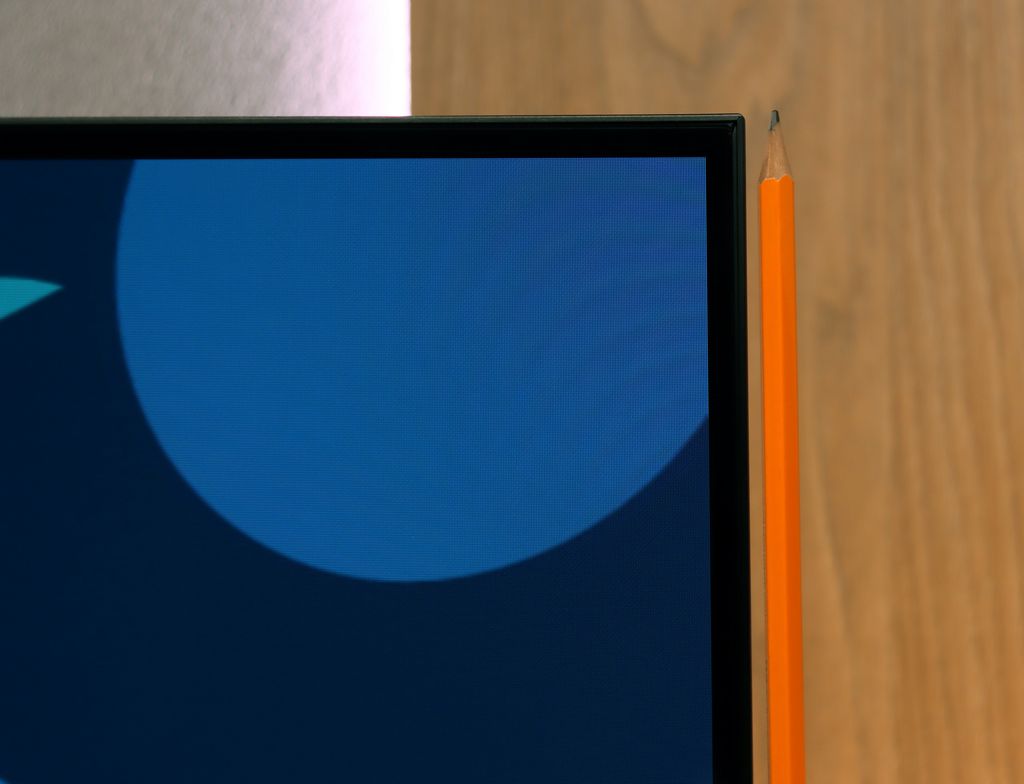
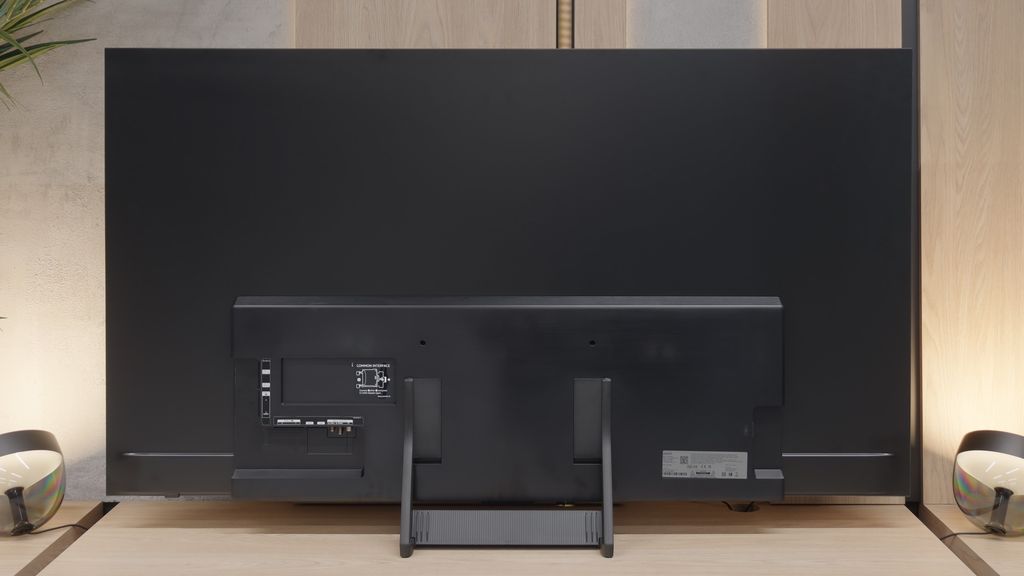
Contrast and black detail
10/10
10/10
Contrast:

Result
∞:1

Result
∞:1

Result
∞:1

Result
∞:1

Result
∞:1

Result
∞:1

Result
∞:1

Result
∞:1

Result
∞:1

Result
∞:1
Halo effect and black detail visibility:
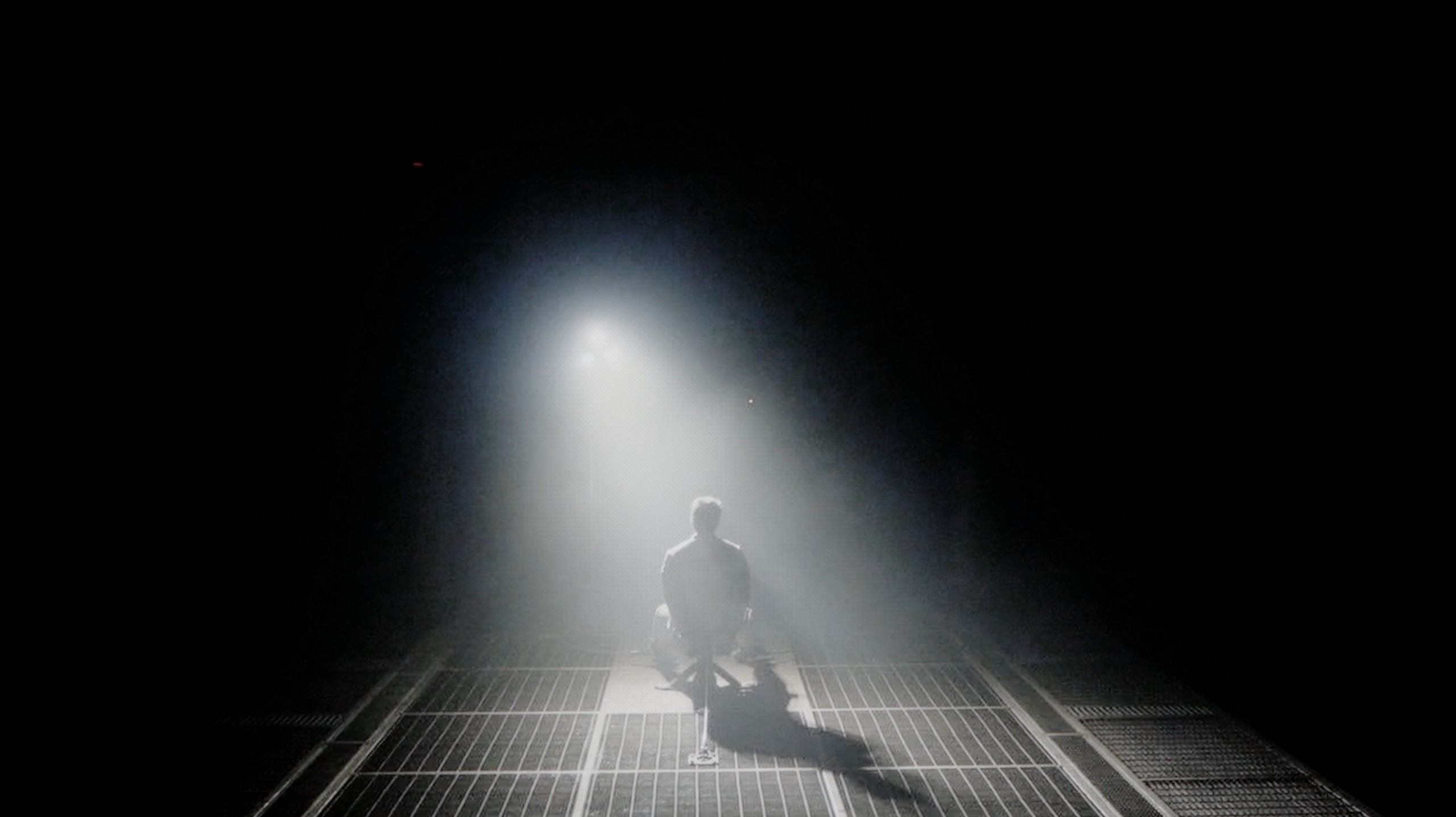
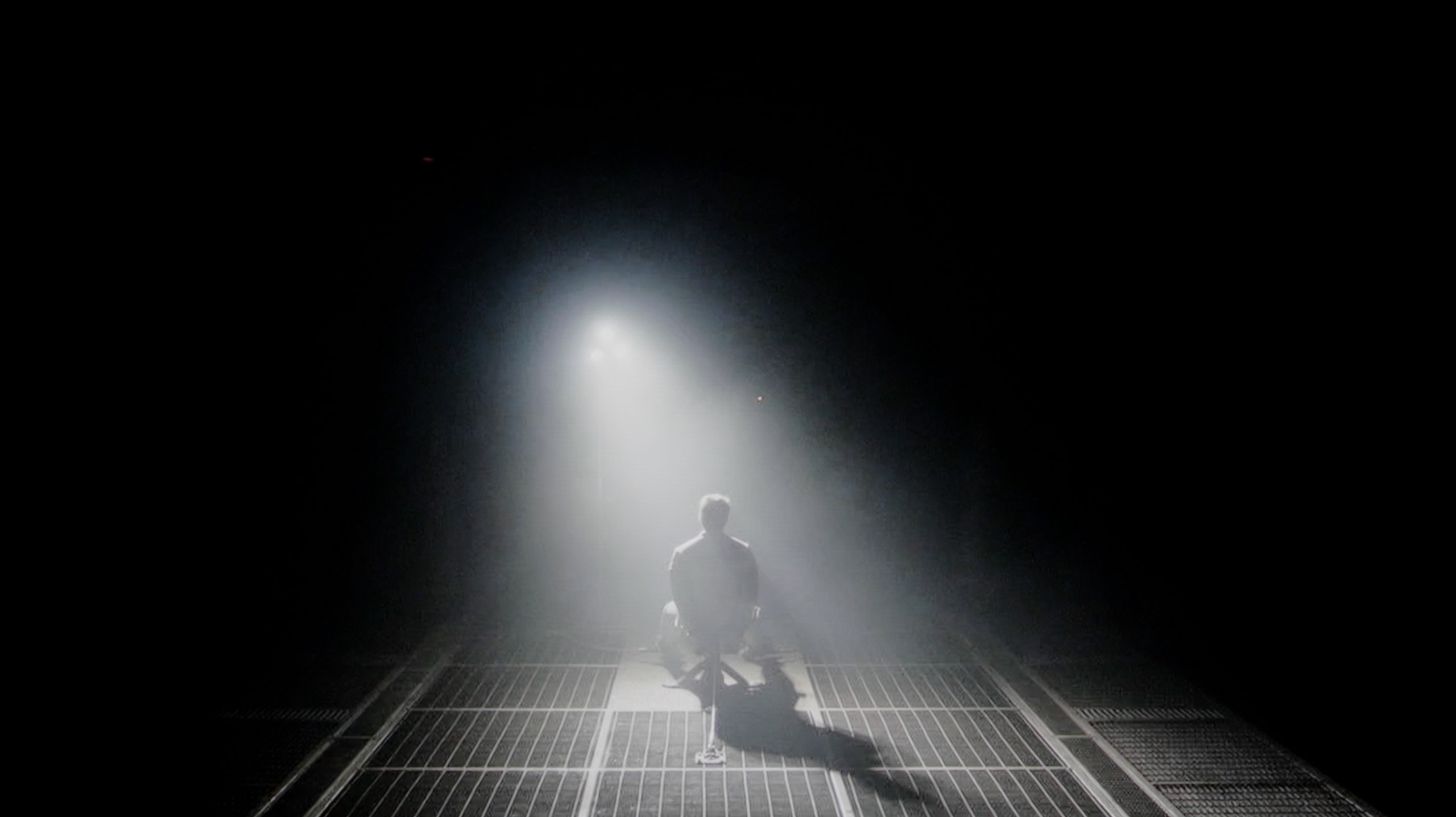
The black levels and contrast of the Panasonic Z95B can be summed up in one word – perfection. As is the case with any OLED television, the panel's ability to control individual pixels allows for complete dimming of sections of the image, resulting in absolute black. This enables the Z95B to offer ideal separation between bright and dark elements in a scene, with no visible blooming, lightening, or halo effects on the screen. Even in the most demanding sequences, where other LCD televisions reveal their limitations, the image here remains clear and readable. In practice, it is hard to imagine that OLEDs in this category could improve further, as the technology of self-dimming pixels simply has no weaknesses regarding contrast. The Panasonic Z95B does not deviate from this pattern and demonstrates that there is no room for significant improvements in terms of black levels – it sets a reference standard that is difficult to surpass.
In terms of black levels and contrast, it doesn't matter whether we choose the WOLED or QD-OLED panel version for the S90F. In both cases, the effect in typical cinema conditions remains the same, and we can always count on perfect black. This impresses not only when watching films but also regular series. If someone has never encountered an organic matrix, the first meeting with such a television can truly captivate. It makes no difference whether we are looking at less demanding scenes, like those from the film Oblivion, or at parts where only a few details remain on the screen, such as stars in the sky in Star Wars – in every case, the image remains clear, and the details are perfectly separated from the background. This is one of the greatest advantages of OLED, as each pixel is controlled independently and acts as a separate zone. This means there is no need to worry about compromises in the visibility of details in bright areas, which can disappear even in the best LCD televisions. It is in cinematic conditions that the S90F showcases its full potential and can truly impress. Here, OLED technology – including the QD-OLED panel – performs flawlessly and delivers an effect that is hard to criticise.
HDR effect quality
8.7/10
7.8/10
Luminance measurements in HDR:

Result
2069 nit

Result
2118 nit

Result
2131 nit

Result
2114 nit

Result
1442 nit

Result
1416 nit

Result
1585 nit

Result
1449 nit

Result
1379 nit

Result
808 nit
Scene from the movie “Pan” (about 2800 nits)


Scene from the movie “Billy Lynn” (about 1100 nits)


Static HDR10


Dynamic: Dolby Vision
Dynamic: HDR10+


HDR luminance chart:
Samsung S90F QD-OLED
HDR luminance
Panasonic Z95B
HDR luminance
Luminance of RGB colors
The quality of HDR on the Panasonic Z95B is among the absolute best. Thanks to the latest generation panel, referred to by the manufacturer as Primary RGB Tandem OLED, the television can achieve over 2000 nits of brightness in cinematic scenes. The effect is impressive and can amaze with the intensity of the light, providing a sense of connection with the screen that goes beyond previous experiences. Similar feelings accompanied us only during tests of the LG G5, Samsung S95F, or Philips OLED910. Of course, there are moments when the device's algorithms decide to limit luminance – this especially concerns full-screen bright sequences, such as the closing credits in the film The Meg. Even then, the Z95B maintains a level of around 1500 nits, which is still an incredibly impressive result. One can thus say that HDR in this model has reached masterful form. A significant step forward is also evident in colour reproduction. The new tandem OLED panel does not yet match the best QD-OLED screens in terms of full gamut coverage, but the gap between these solutions has significantly decreased. When watching films, the differences are subtle enough that under normal conditions they are hard to notice, and the colours remain vivid and saturated.
The biggest difference between the 65-inch S90F and the other versions is brightness. The QD-OLED panel can reach up to 1700 nits in laboratory tests, which is over 500 nits more than the variant with a WOLED matrix. This translates to a decidedly stronger and more engaging HDR effect. In most scenes, bright parts of the image look fantastic, and we must admit that we were positively surprised, as we expected results more similar to the WOLED version, but we got an effect that makes a great impression even in films. Just like with every OLED, there are moments when the panel needs to limit its brightness a bit. This mainly refers to full-screen, very demanding scenes – for example, in the last test frame from the film "The Meg," the brightness drops to around 800 nits. However, it is hard to consider this a disadvantage, as it is still an excellent result, unprecedented in OLED televisions in this price range. Everything suggests that the 65-inch S90F could be one of the best choices this year for those looking for a strong OLED at a reasonable price. Another advantage of the QD-OLED matrix in HDR content is its colour gamut coverage. Thanks to quantum dots, the television achieves almost a full 100% of the DCI-P3 colour space and nearly 90% of the BT.2020 colour space. These values place it alongside much more expensive models and make it exceptional in its class.
Factory color reproduction
9.5/10
7/10


Factory Mode
After calibration


Factory Mode
After calibration
The factory colour reproduction of the Filmmaker mode, my dear friends, is truly remarkable in the case of the Panasonic Z95B. I'm referring to our test sample, but the result was so good that it’s hard to believe. The only detail one might nitpick about is a slight lack of blue in the white balance, but apart from that, the television straight out of the box presented an image unlike anything we have ever seen in factory mode. Tests of the colour palette, Color Checker – everything indicated values below Delta 2. That’s a much lower result than the threshold of human eye perception, which means, quite simply, that the viewer has no chance of noticing any serious deviations. It looks as though Panasonic has actually calibrated this model at the factory stage. Of course, we cannot rule out the possibility that we received an exceptionally well-set sample, but the result is still impressive. We are very strict when it comes to evaluating factory calibration, and here our jaws simply dropped.
Samsung S90F, like most modern televisions, offers several picture modes, but in line with our tradition, we tested it in the most important one, which is Filmmaker. This setting makes the image look much more natural than in the default, often overly saturated modes. It is neither excessively vivid nor artificially subdued – just closer to what one should actually see. However, this does not mean it is perfect. The S90F had noticeable shortcomings in white balance, mainly in the blue range, which gave a slightly yellowish filter effect on most scenes. One might argue that it looks more "filmic" because it is warmer, but let’s not kid ourselves – George Lucas didn't shoot Star Wars in sepia 😉 (a comparison with the scene can be found, as always, below). In HDR materials, there was also an issue with brightness management. The EOTF curve clearly showed that the television brightens the picture more than it should, leading to some effects appearing too intense and deviating from the reference. Fortunately, a large part of these shortcomings can be eliminated through professional calibration – we will discuss the effects of this procedure further on in the test.
Color reproduction after calibration
9.8/10
9.3/10
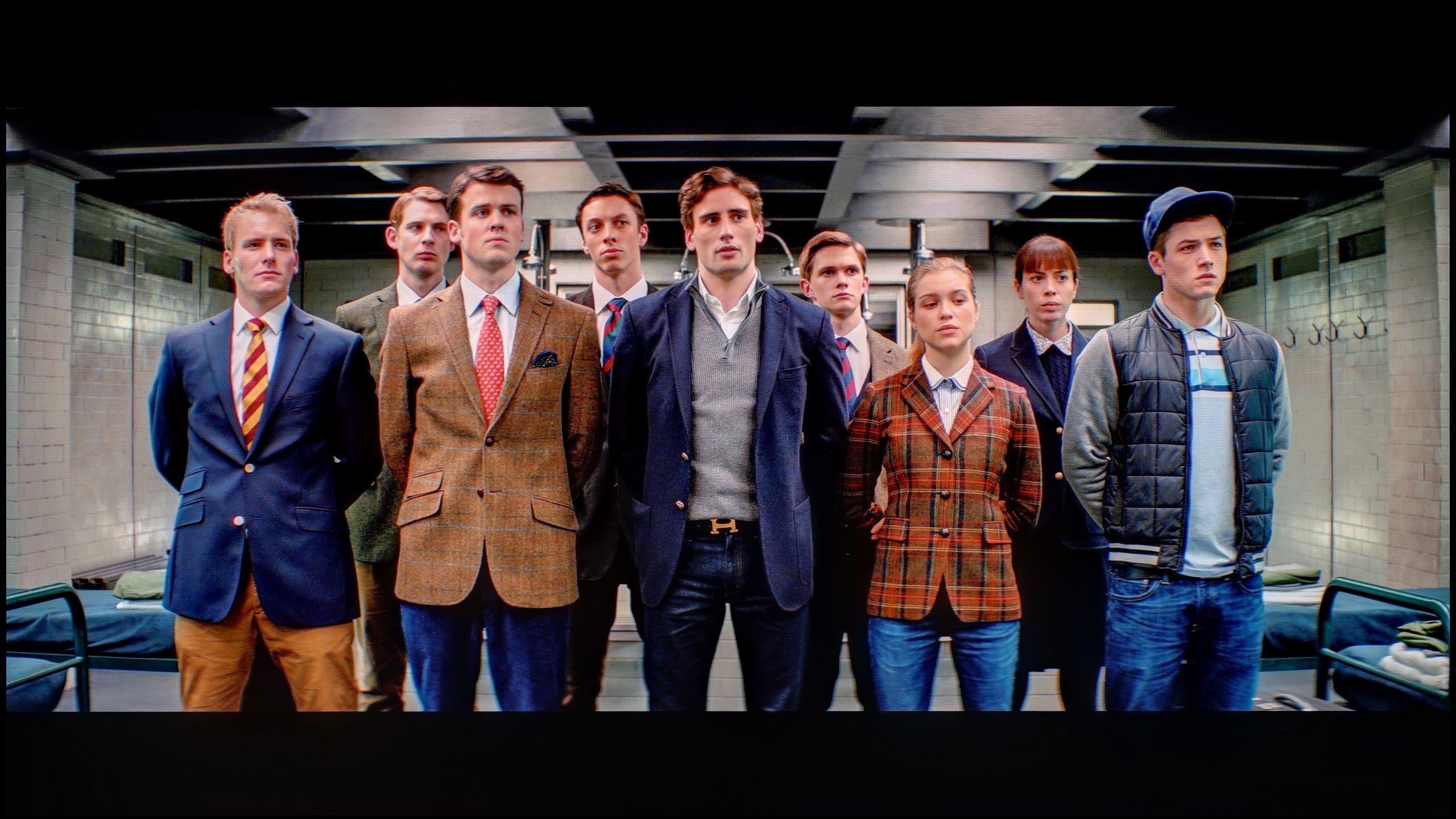



The colour representation after calibration in the Z95B is a topic that is difficult to elaborate on, as there was simply not much to be done here. A slight adjustment of the white balance was sufficient to eliminate the lack of blue, and at this point, the picture reached an almost reference level. It must be admitted that we haven't had such a small range of work in a while. If any of you are particularly observant, you may notice minimal deviations in the EOTF curve, but this is rather related to the operation of the dynamic tone mapping function we mentioned earlier. In fact, it is not a flaw, but a characteristic of this solution, which deliberately alters the brightness characteristics depending on the scene. In summary, we are extremely impressed. The Panasonic Z95B is a television that looks great straight out of the box, and after calibration, it reaches a level where it is truly difficult for us to find anything to improve.
Calibration quickly revealed that the S90F has a significant margin of capability. The image in SDR immediately gained a natural quality – classic films no longer looked as if someone had applied a yellowish filter to them, and the colours regained their proper character. It is a return to the atmosphere of the original, without the impression that someone tried to "age" it forcefully. In HDR content, the difference was even more pronounced. The EOTF curve was managed almost to a reference level, and any deviations are so subtle that most viewers won't even notice them. In practice, the S90F shows an image very close to perfection after calibration. Compared to the WOLED version, it performs even better – mainly due to the wider colour gamut coverage, which makes the colours appear fuller and more intense.
Smoothness of tonal transitions
7.8/10
8.8/10
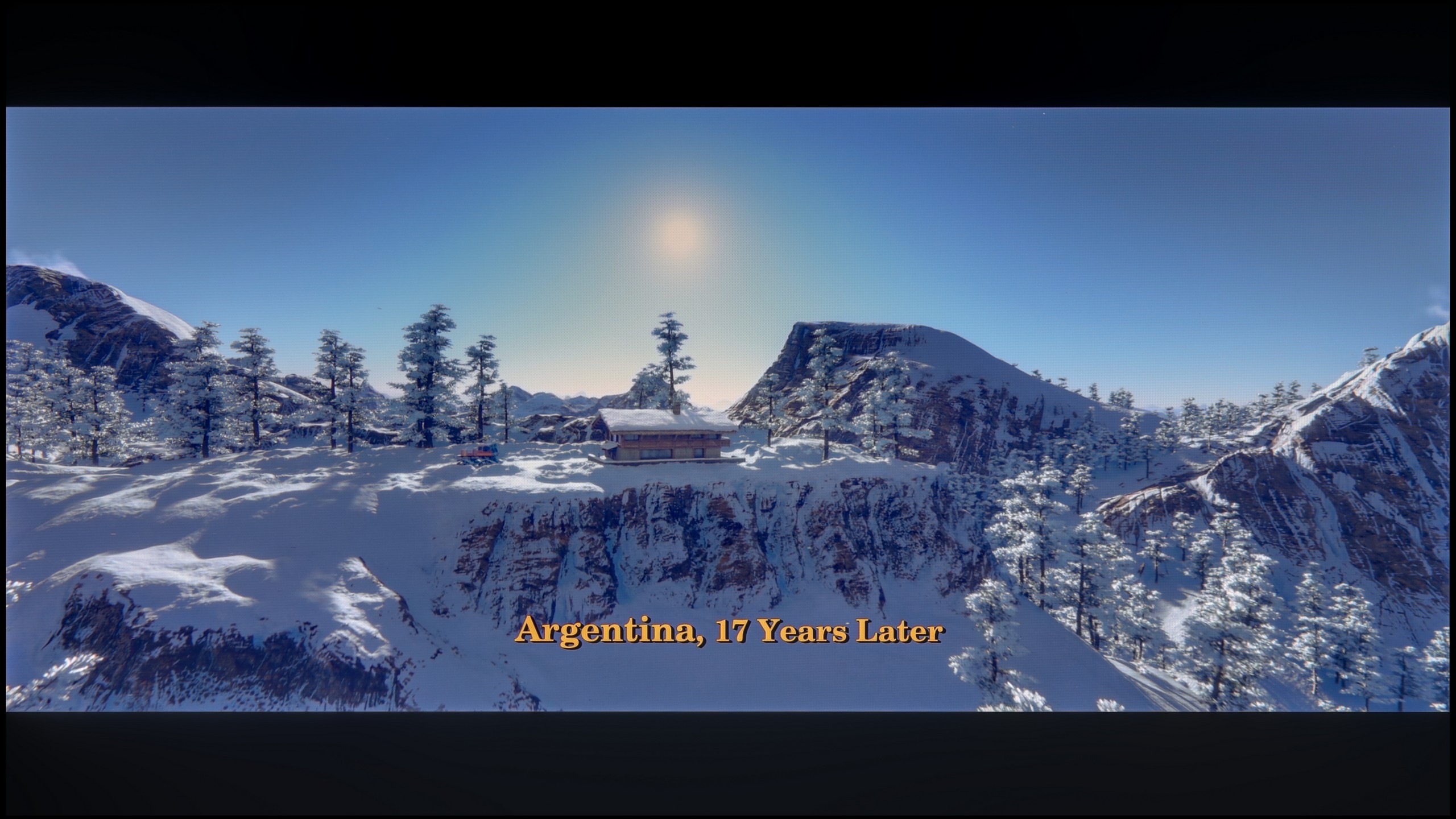



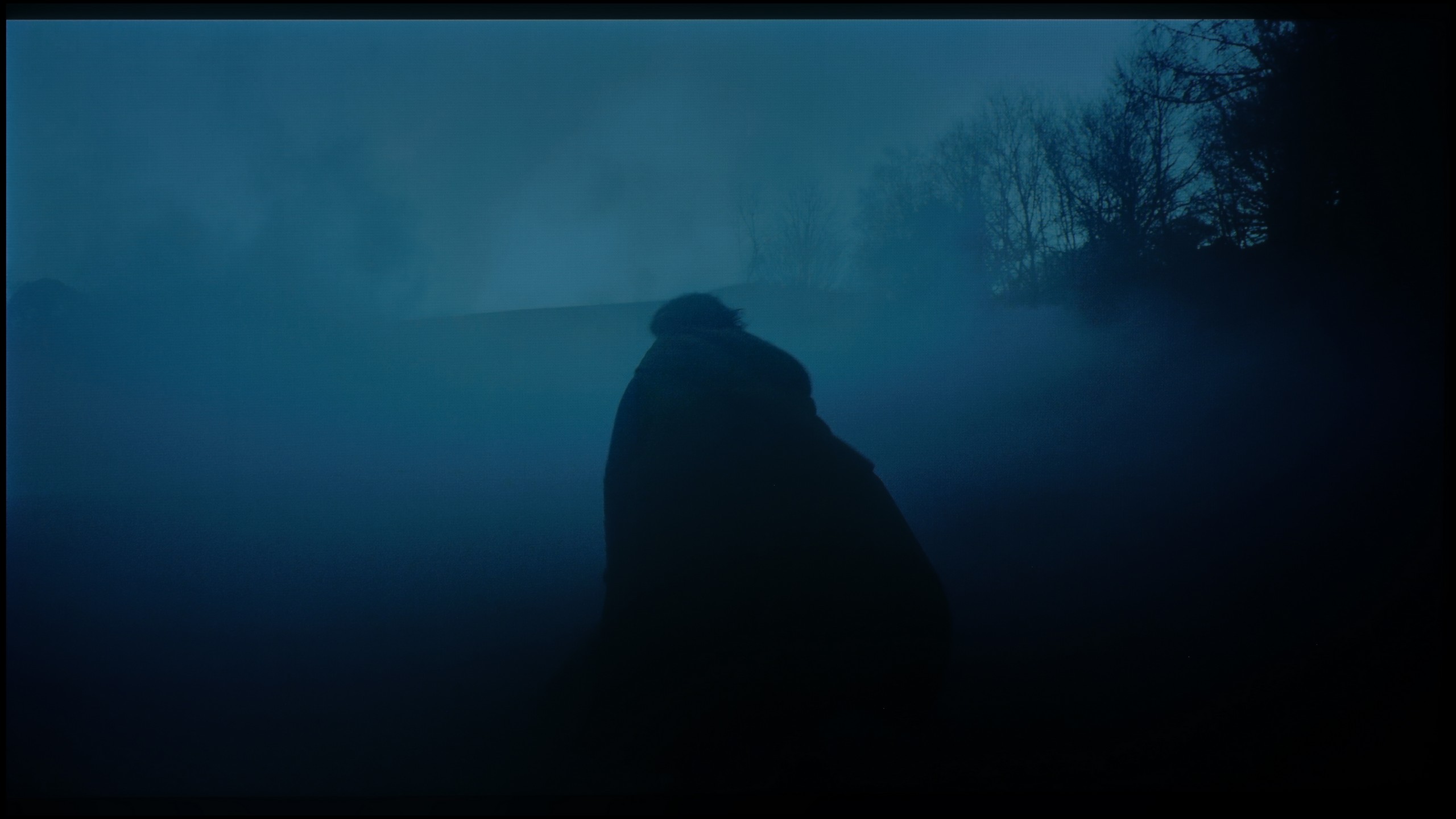
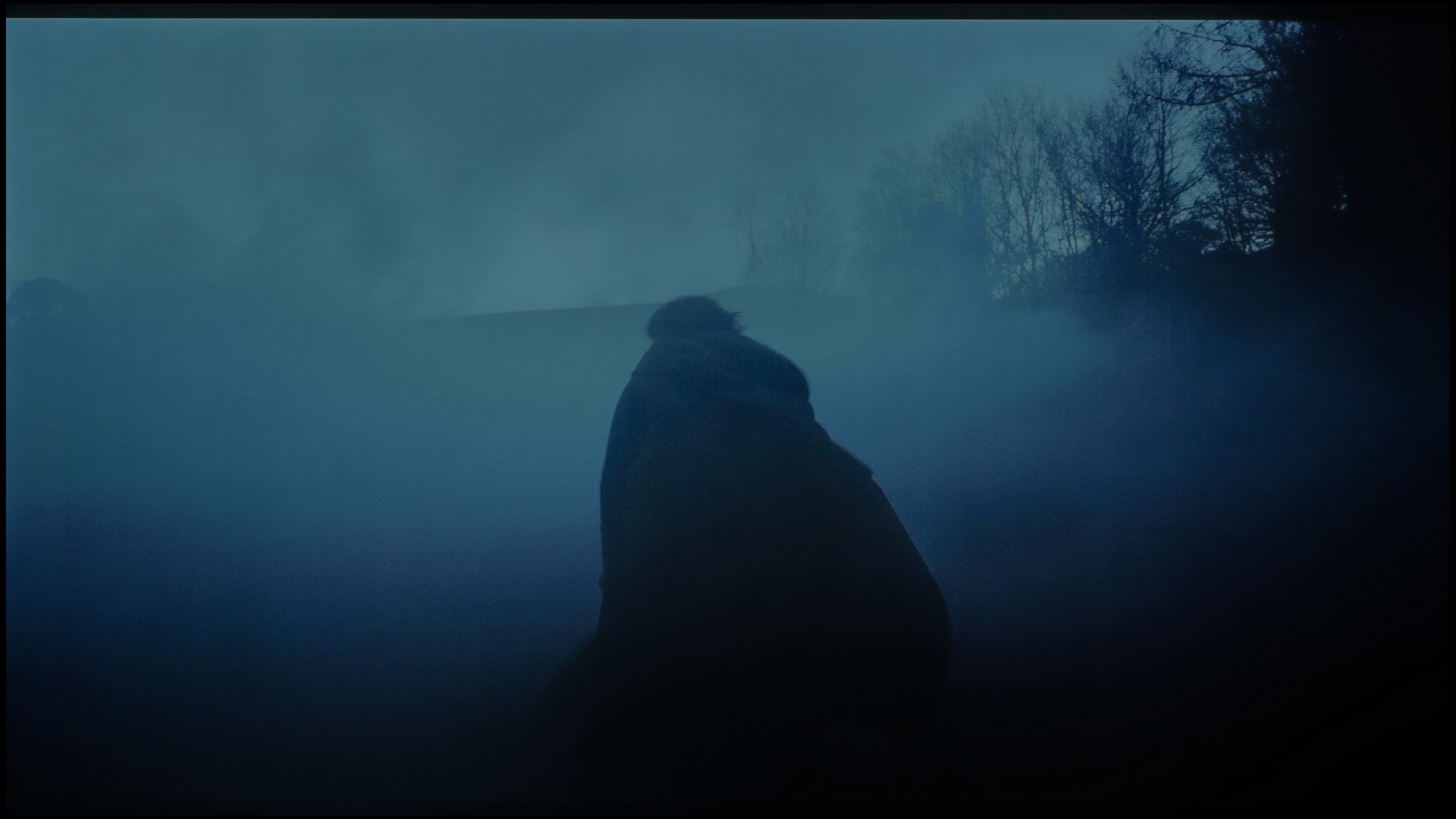

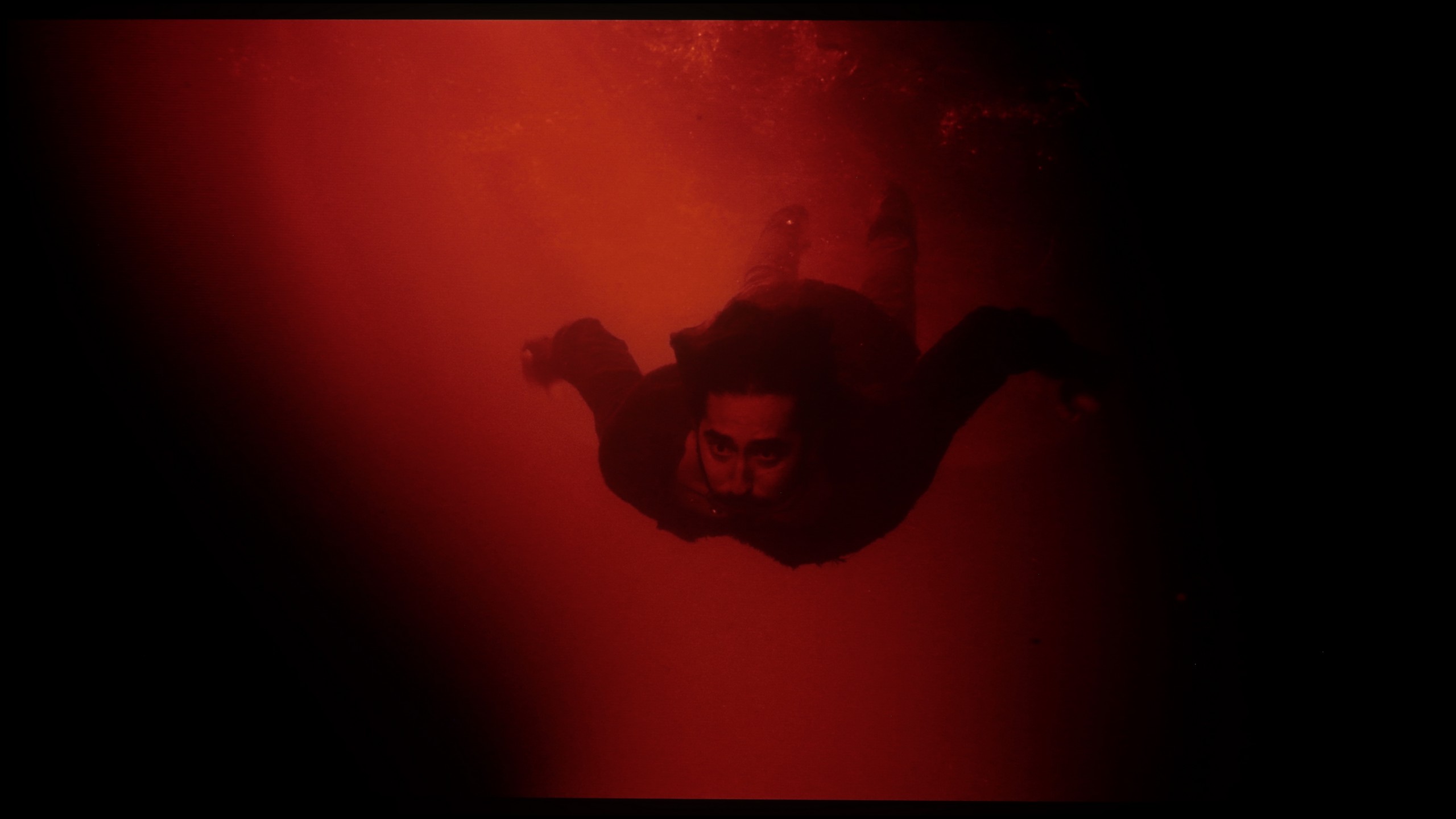




Posterisation, or the banding of colours, was the Achilles' heel of Panasonic's flagship model, the Z95A, last year. In the new Z95B, it is clear that the manufacturer has made an effort to improve the gradation issue, and the problem has been largely corrected. In most scenes, colour banding is no longer noticeable, and tonal transitions are smooth and look natural. However, this does not mean that the problem has completely disappeared. In extremely challenging sequences, especially in very dark scenes like those from the film Green Knight, certain imperfections can still be observed. Nevertheless, it is gratifying that Panasonic has approached the issue seriously and has made significant progress, as the difference compared to the previous model is truly noticeable.
QD-OLED matrices, thanks to a very wide colour palette, simply have a greater number of colours, which facilitates the smooth blending of one shade with another. In the case of the S90F, this was clearly visible – compared to the classic version with the WOLED panel, we noticed a distinct improvement. Most transitions were smooth and practically invisible, and the image in most scenes appeared exceptionally cohesive. In very bright segments, minor imperfections can still be discerned, but they are cosmetic enough not to distract the viewer's attention.
Image scaling and smoothness of tonal transitions
6/10
7.5/10
Smooth transition function
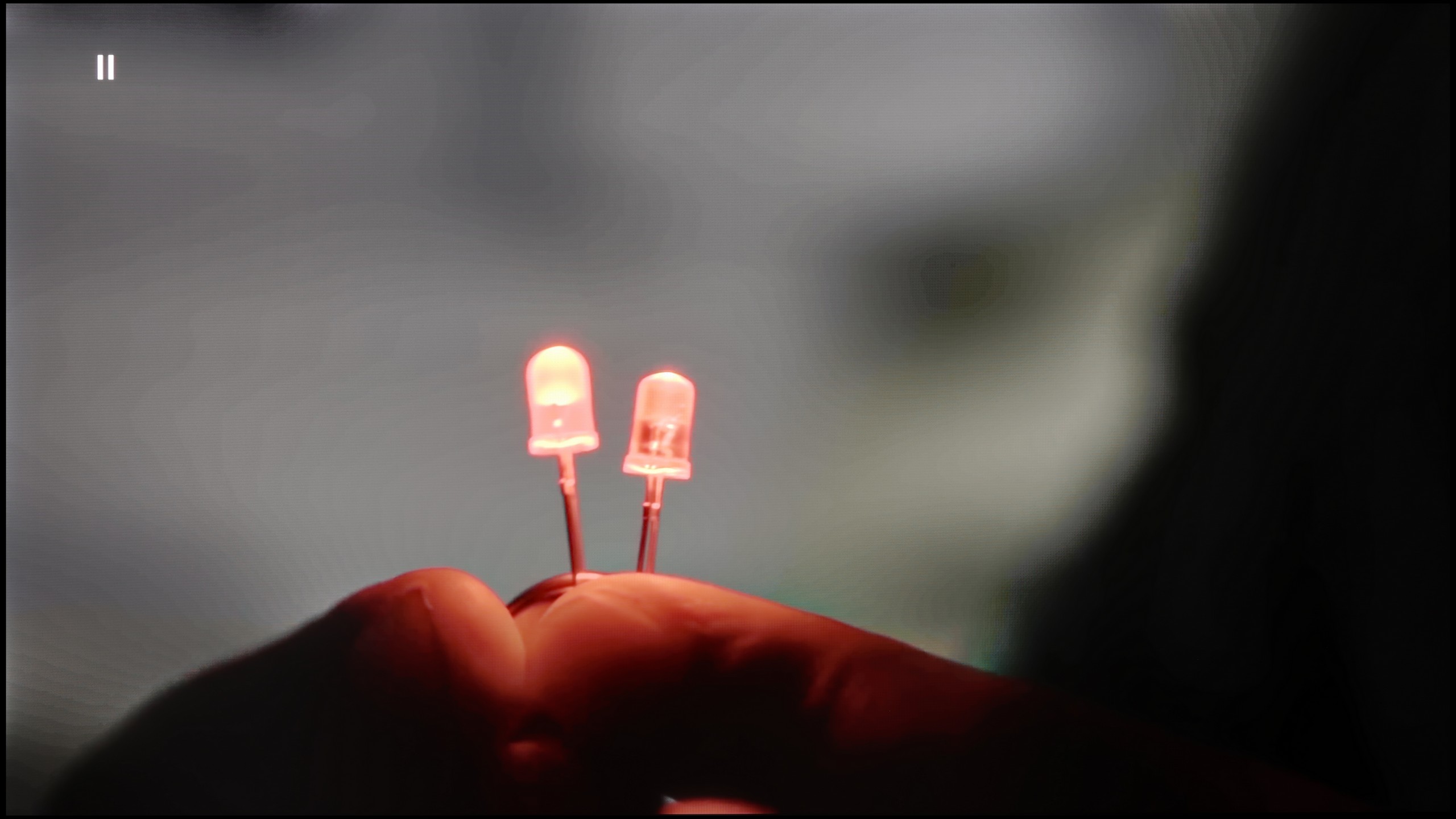
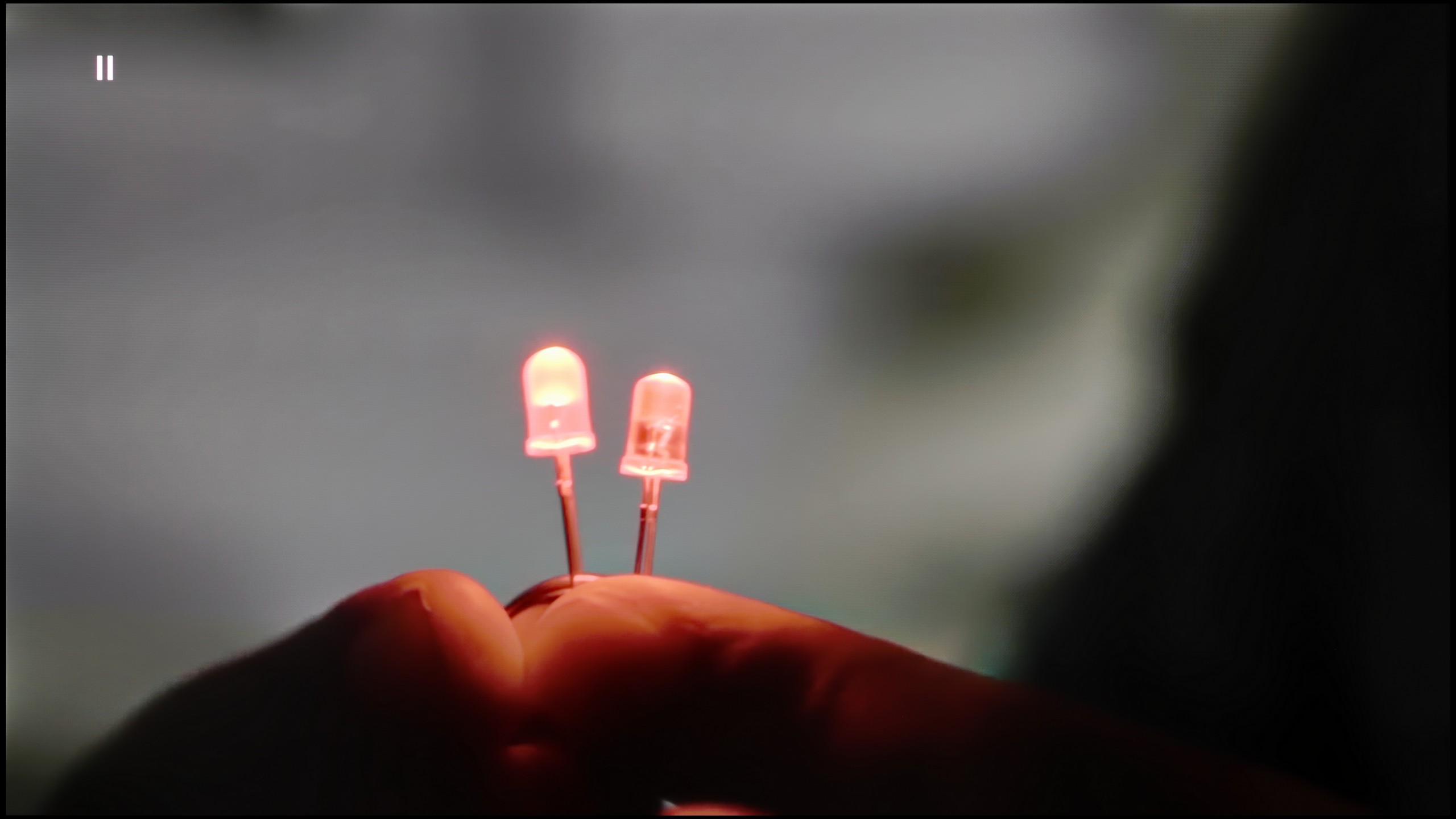
Image without overscan on the SD signal

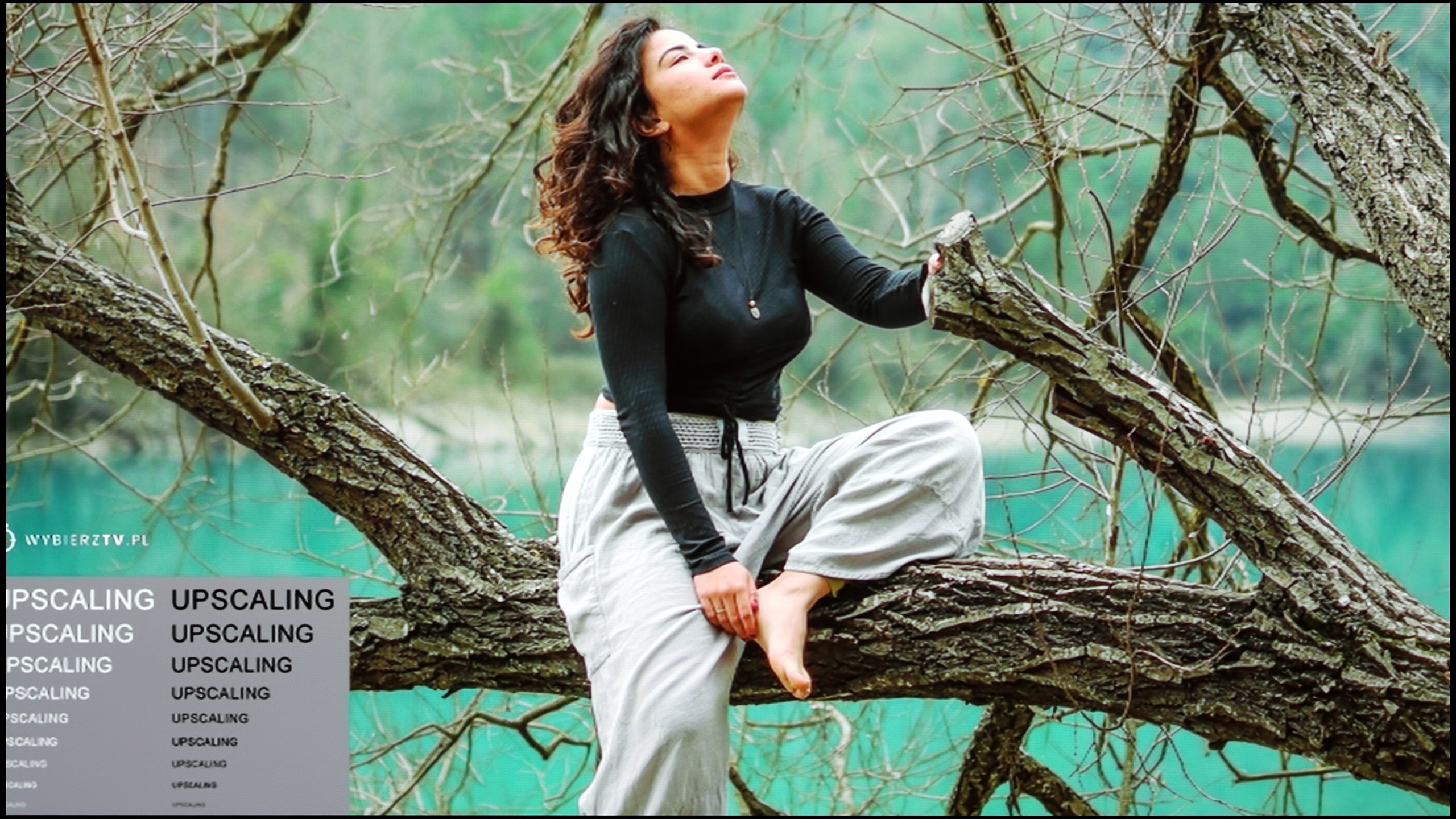
Let’s start with what works well. The upscaling on the Z95B is at a very high level – the picture in lower resolutions is clear and sharp, and the only minor drawbacks are subtle aliasing in certain areas of the image. It’s also important that the television does not crop the material in any way and maintains its proportions, which is not always an obvious fact even in 2025.
The situation with digital processing is less impressive. Features such as “gradation smoothing” or “block noise reduction” practically do not work – the material tested looked identical regardless of the settings. We might as well state that this feature simply does not exist. This is somewhat disappointing, especially since Panasonic heavily promotes its HCX Pro AI II processor, boasting the presence of artificial intelligence to enhance picture quality. Meanwhile, in such a basic area, the television does not provide a real effect and it appears weaker than one might expect from high-end equipment.
The S90F performs really well here, although there are some comments that recur with most Samsung televisions. The noise reduction feature can effectively smooth out unwanted colour transitions in poorer materials, such as television or YouTube, making them simply look better. However, it should be noted that it operates quite aggressively and can also soften elements we wouldn't want to touch, like facial details. Therefore, if we want to use it, it’s best to set it to 'medium' and be aware of the compromise it entails. The upscaling itself is at a high level – low-quality materials are upscaled towards a 4K-like image. The only caveat is that the S90F can still struggle with so-called overscan, meaning it slightly trims edges with very poor materials like 576p and lower.
Blur and motion smoothness
8.5/10
8.5/10
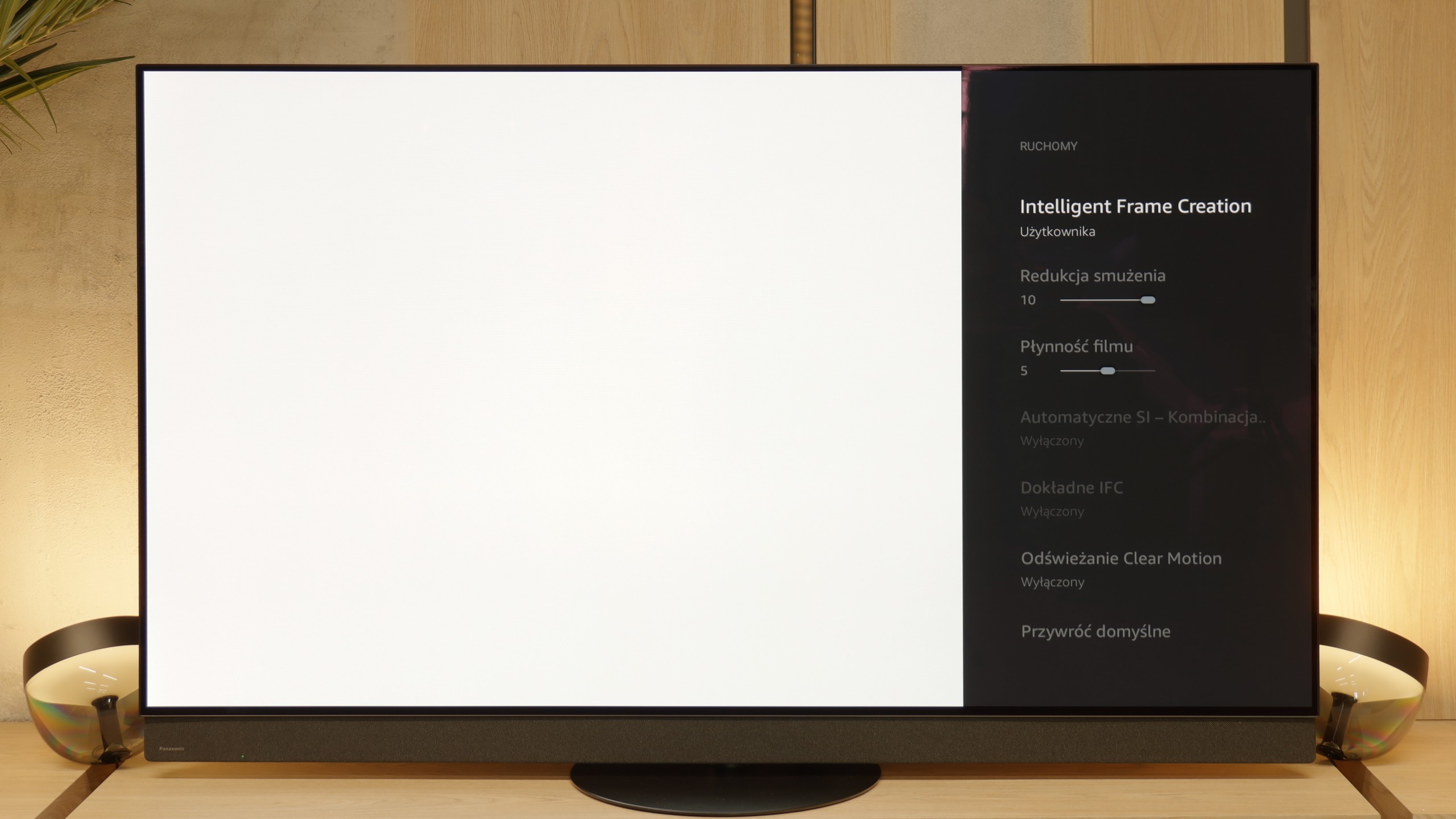
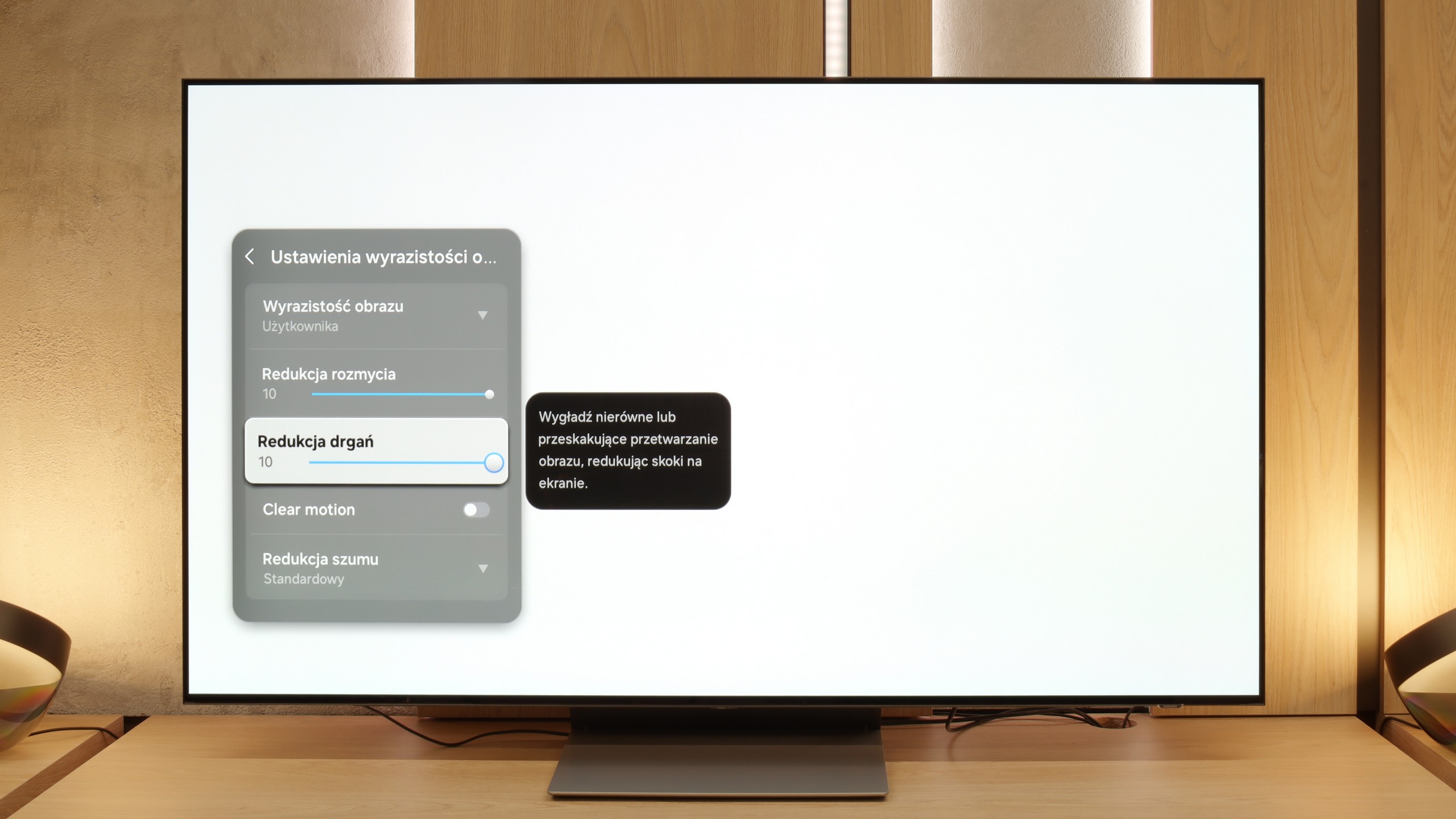
Blur (native resolution, maximum refresh rate):






Blur (BFI function enabled):
Image flickers in this mode



Image flickers in this mode



Smużenie (4K@144Hz):



Smużenie (4K@144Hz):



The OLED matrix with a very high refresh rate already provides an extremely sharp image even in dynamic sports scenes, such as football or basketball matches, and the Z95B is no exception. It is also very important that the television is equipped with an proprietary motion smoothing system called “Intelligent Frame Creation”. Among the available sliders, the most important one is the one named “film smoothness”, as it allows you to adjust motion to your own preferences when watching 24-frame materials, i.e. films – from a more “frame-like” appearance to a smooth, almost theatrical effect. It is somewhat disappointing that Panasonic did not choose to overclock the latest OLED matrix to 165 Hz, as Samsung did with the S95F or LG with the G5, because we know that the panel is technically capable of it. On the other hand, this is mainly an advantage for PC gamers, so in everyday viewing, it is not a significant drawback since we are limited to 120Hz.
S90F is an OLED with a refresh rate of 144 Hz, but in practice, it primarily indicates how it performs at 120 Hz, as this frequency is most significant when watching sports. The QD-OLED panel is no different in this regard from WOLED panels – the response of the pixels is nearly instantaneous, so motion is rendered with surgical precision. The result is predictable. The image is virtually devoid of motion blur, making gaming on consoles, matches, or other sports broadcasts incredibly enjoyable on the S90F.
Fans of films and series have not been overlooked either. Like every Samsung television with a refresh rate of 120 Hz and above, the S90F features a proprietary motion smoothing technology called "Image Clarity." Here, we find two sliders – blur reduction and judder reduction – which allow for improved fluidity of materials recorded at 24 frames and tailoring the effect to personal preferences.
Console compatibility and gaming features
10/10
9.6/10
- ALLM
- VRR
- VRR range40 - 144Hz48 - 144Hz
- Dolby Vision Game Mode
- Correct implementation of HGIG
- 1080p@120Hz
- 1440p@120Hz
- 4K@120Hz
- Game bar
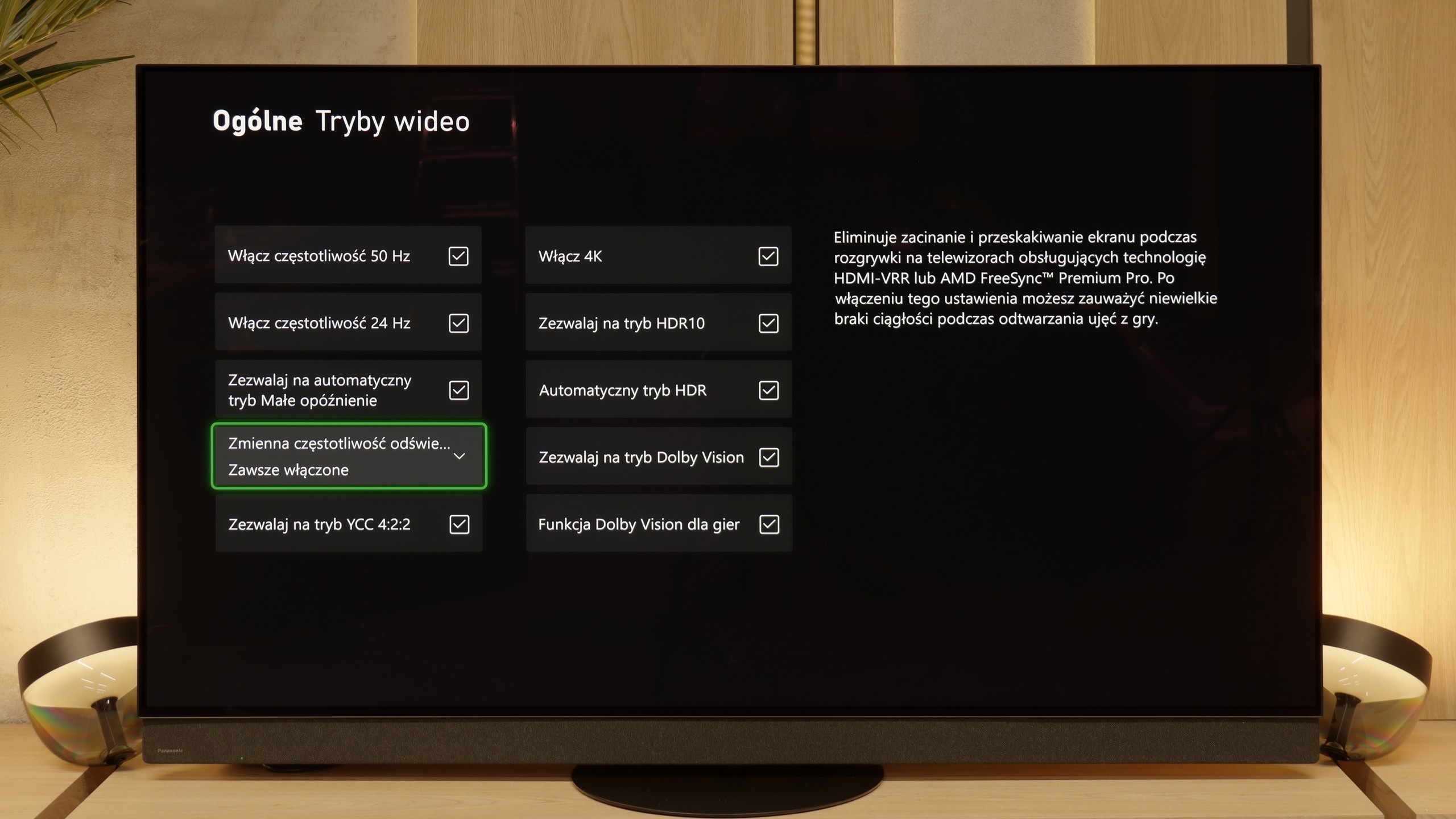
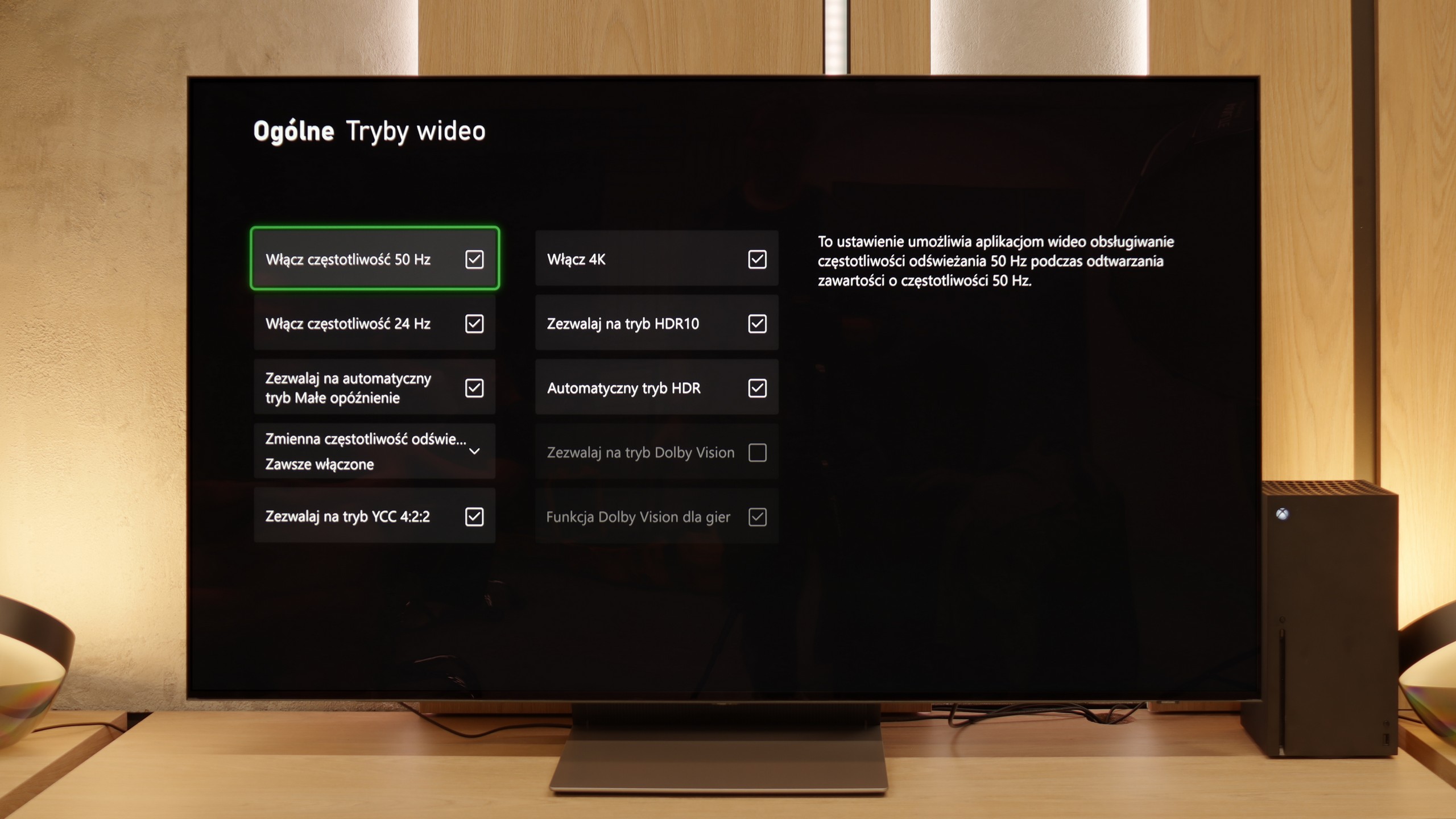
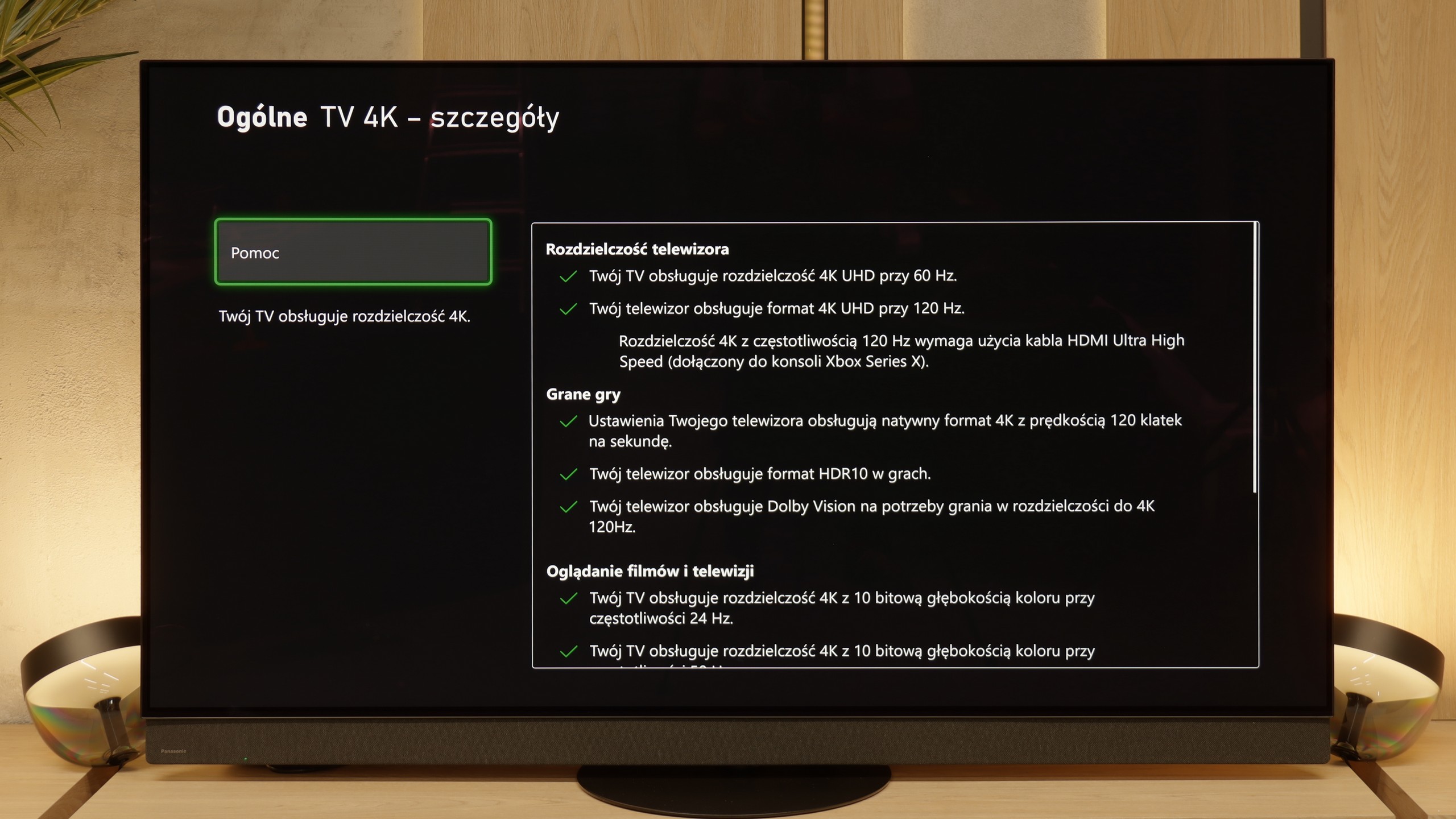
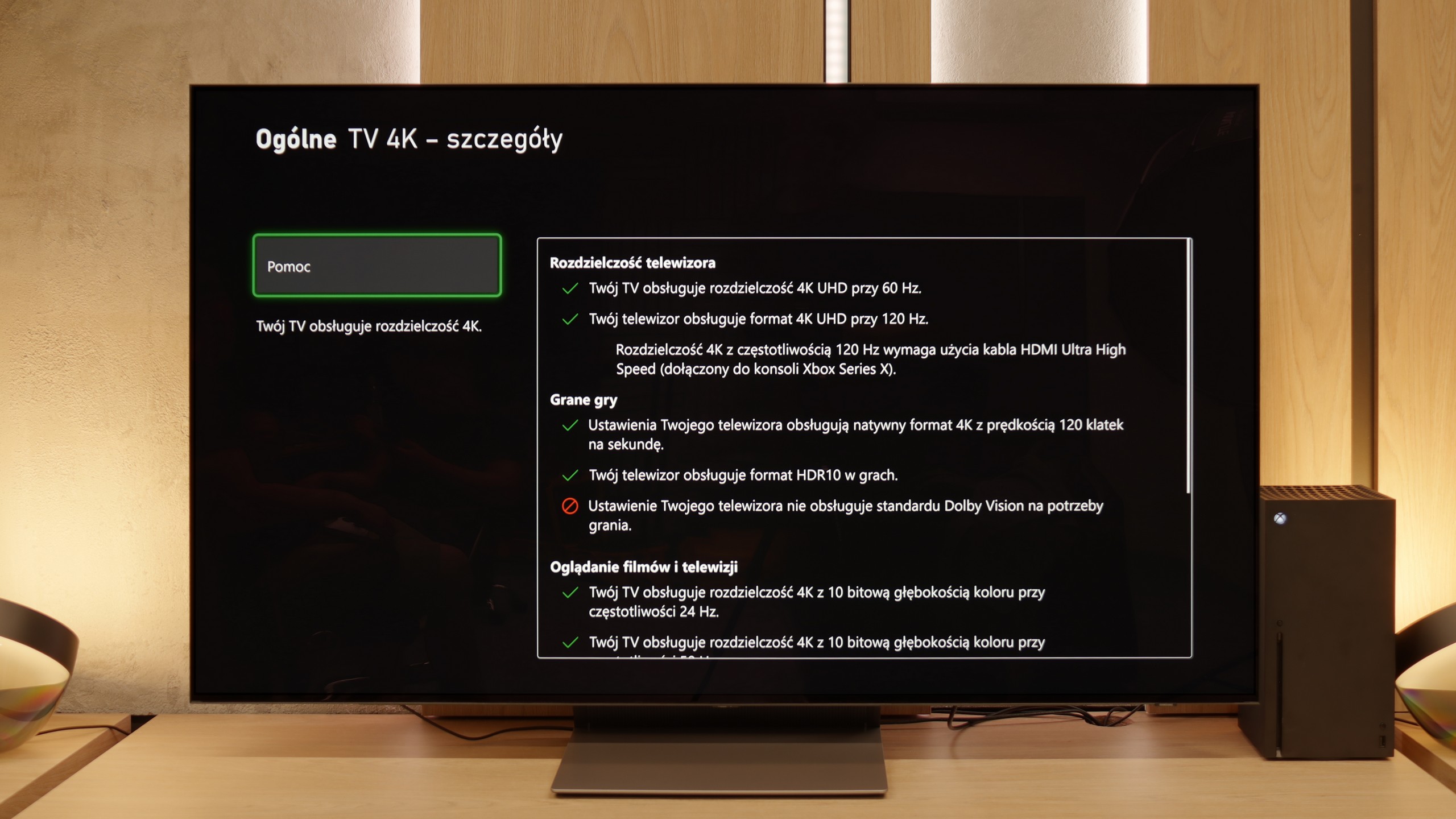
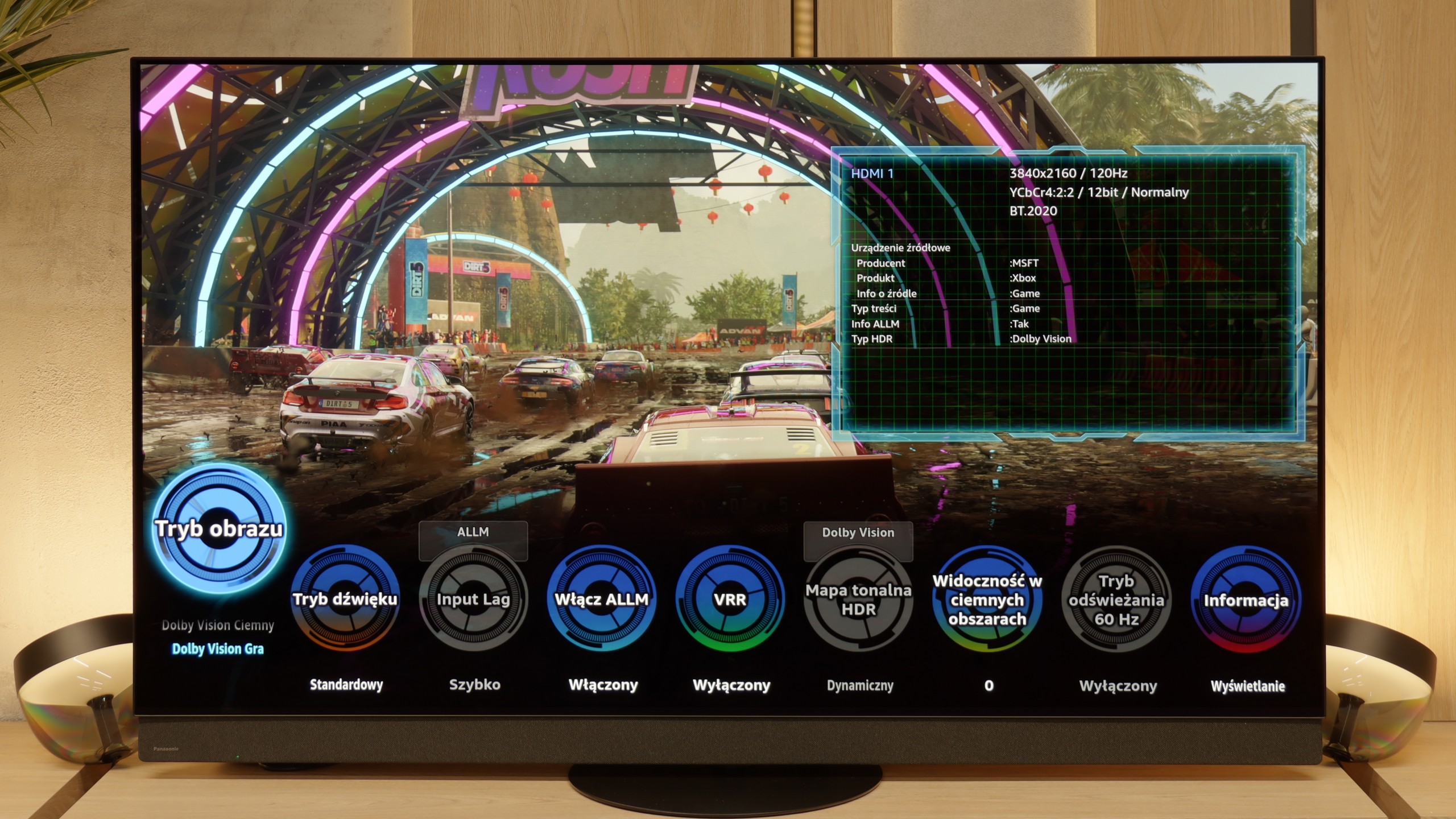
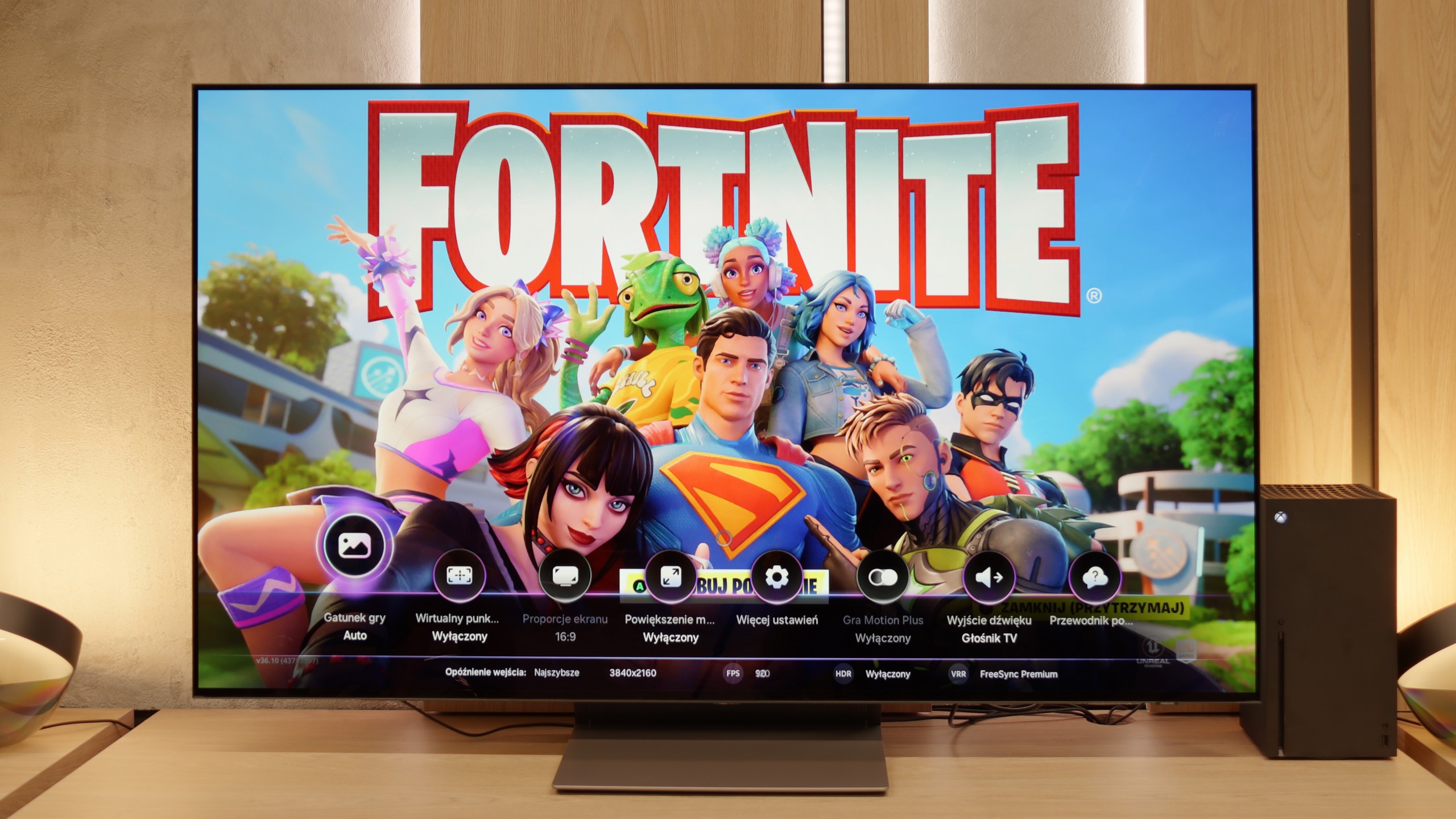
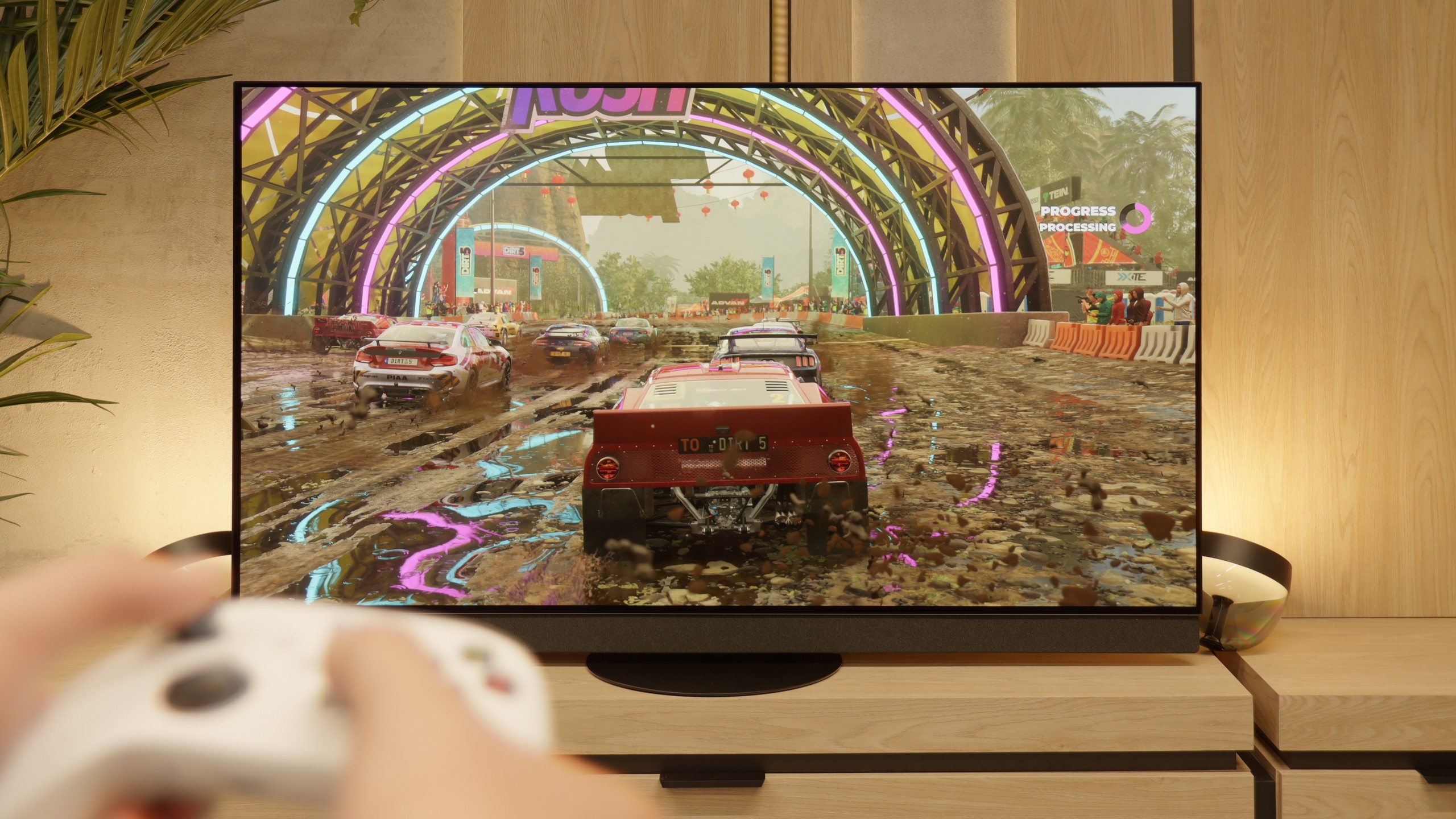
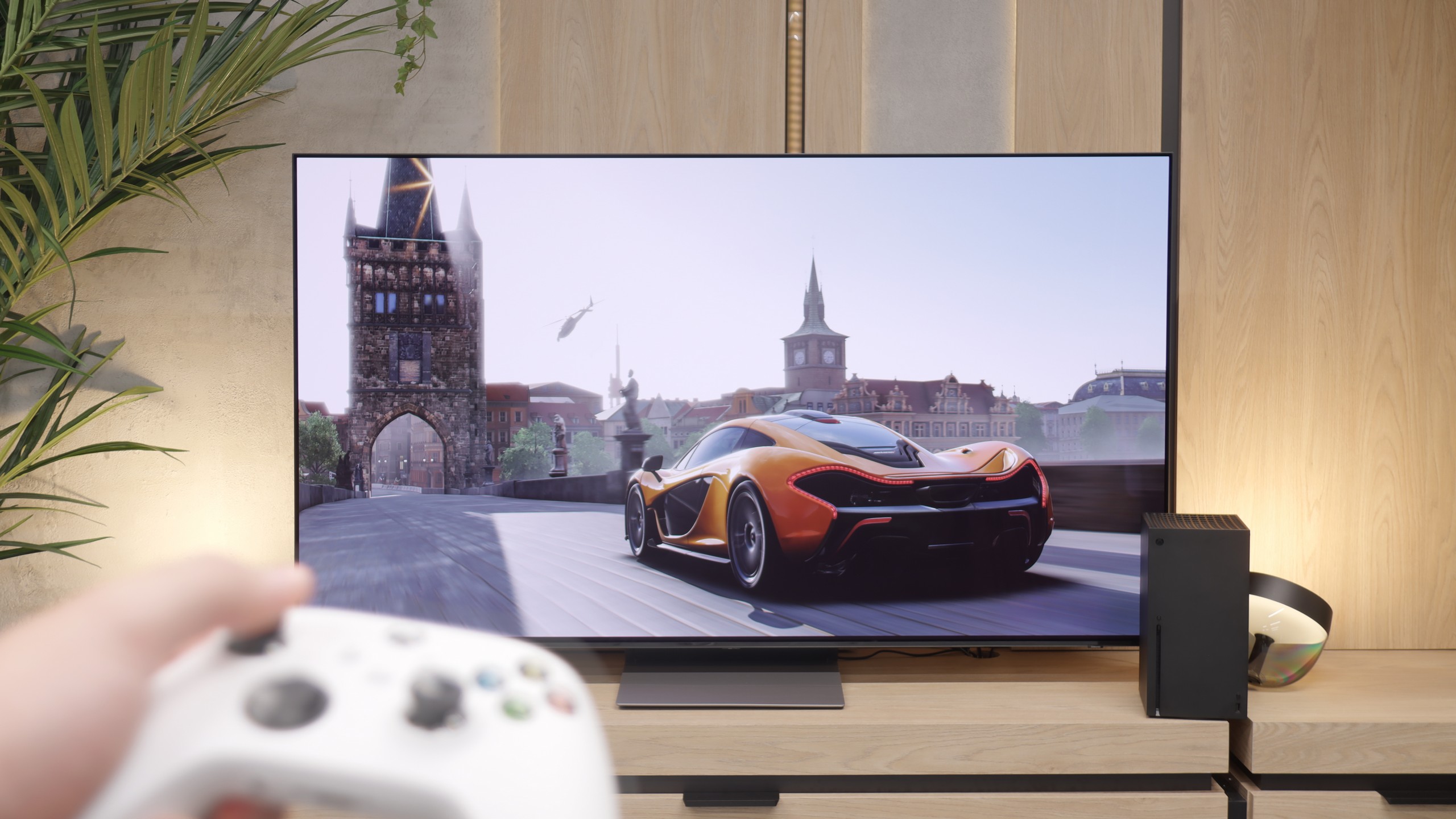
The Panasonic Z95B is fully equipped for gaming. Two HDMI 2.1 ports with full bandwidth of 48 Gb/s guarantee support for everything you would expect from a modern screen. There is VRR frame synchronization, an automatic ALLM game mode, and full compatibility with HDR formats used in games. The television supports both Dolby Vision for Xbox and the popular HGiG, which has been implemented correctly in this case, so it actually works as it should.
Although the brand is mainly associated with home cinema and equipment for filmmakers, there is also room here for features for gamers. On board, there is a Game Bar (or rather Game Circles) – visually, it looks a bit unusual, but it serves its purpose and allows you to quickly check the most important picture parameters. The only thing that is actually missing for complete happiness is having four HDMI 2.1 ports instead of two. It's a minor detail, but in a television of this class, one could expect a full set.
The S90F is a television that truly brings a lot of joy when gaming. To start, we have four full-fledged HDMI 2.1 ports, which means you can connect all consoles and PCs without worrying about which device has priority. This is a convenient and practical solution that is by no means a given with other manufacturers. Additionally, there are key features such as automatic game mode (ALLM), which automatically switches the screen to low-latency settings, and VRR frame synchronization that operates in a wide range from 48 to 144 Hz. As a result, the picture remains smooth regardless of whether we're playing fast-paced online shooters or more leisurely narrative titles. The Game Bar also deserves a mention – a panel that allows quick access to several useful additions. For example, you can enable an additional crosshair in the centre of the screen, enlarge the minimap, or, in the case of PC, change the aspect ratio. Lastly, there is also the unique Game Motion Plus mode from Samsung. Its purpose is to smooth out older or poorly optimized titles, and it actually works pretty well. Thanks to this mode, even less polished games can look better and provide a more enjoyable gaming experience than on other televisions that theoretically offer the same technical specifications.
Input lag
10/10
10/10
SDR
HDR
Dolby Vision
Regardless of the content being watched, the input lag on the Z95B is extraordinarily low – even in Dolby Vision, the television operates at 120 Hz with a delay of less than 5 ms. This is a result that places it among the very best screens for gaming. If we could, we would easily give it a rating of 11/10. 😉
In terms of latency, the S90F performs exceptionally well. With 120 Hz content, it is around 5 ms, and with 60 Hz, it's about 10 ms. In practice, this means an immediate response to the controller, mouse or keyboard – without the feeling that something is slowing down the gameplay!
Compatibility with PC
8.6/10
8.6/10
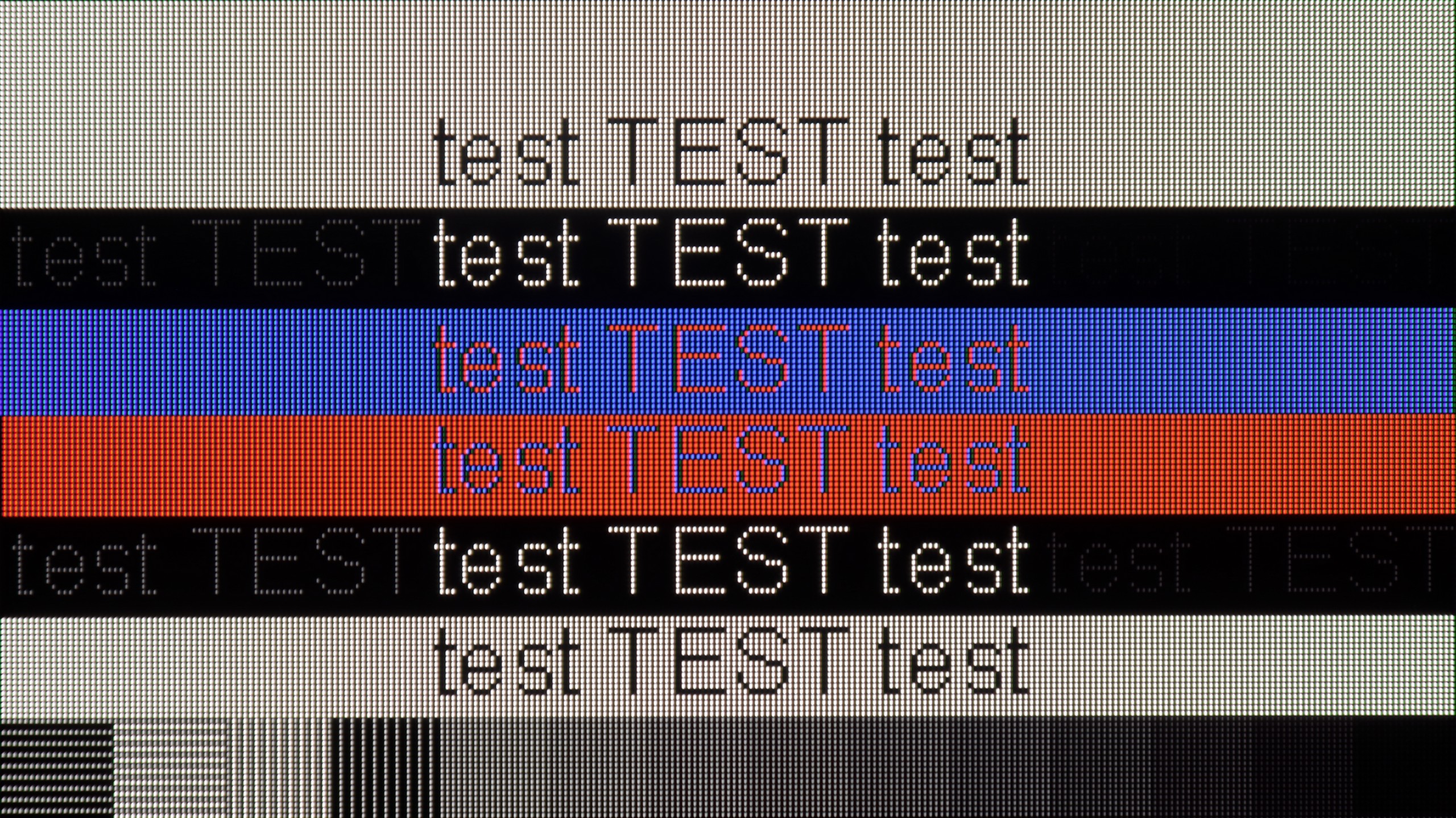
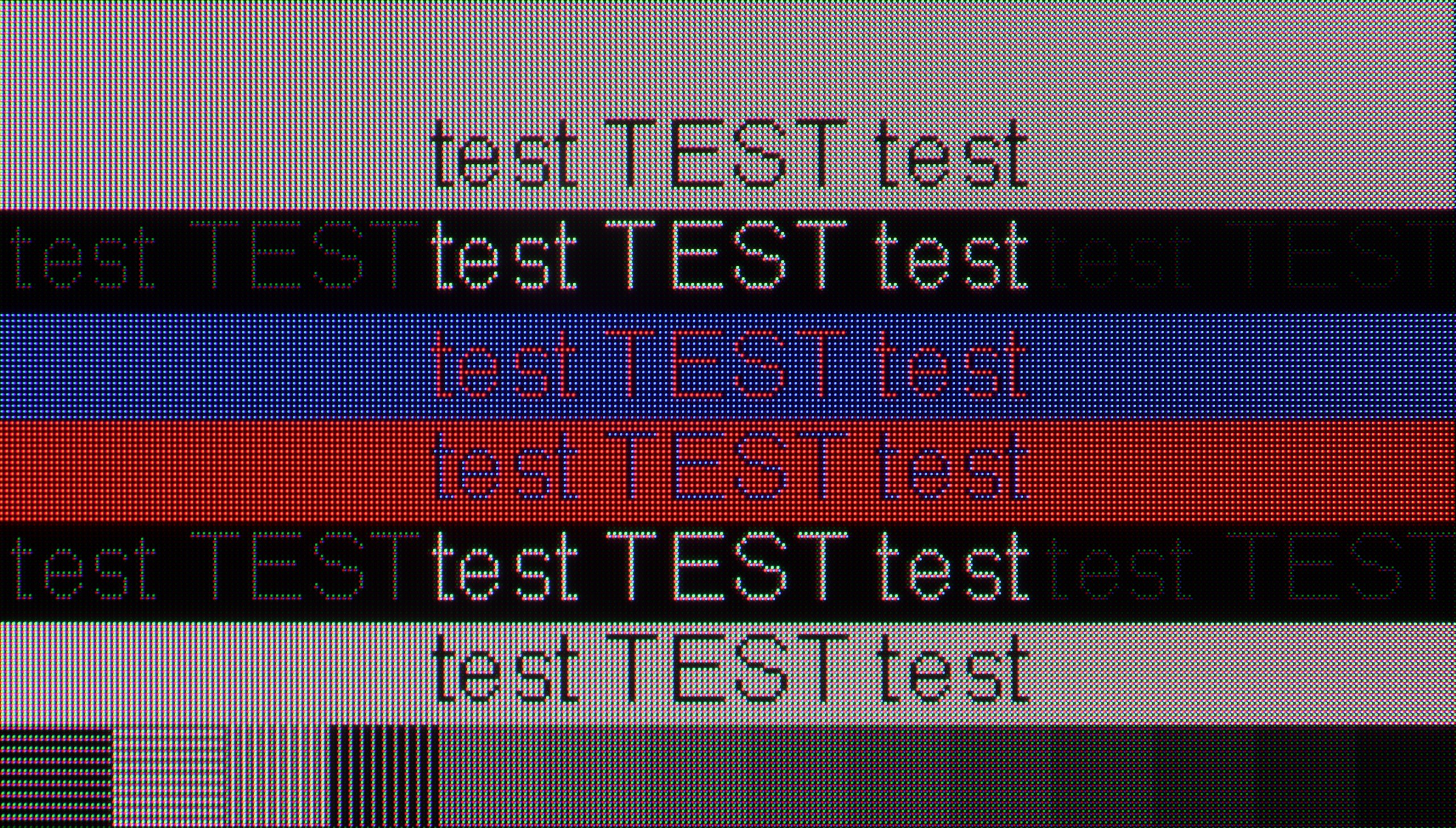
The Z95B can be easily connected to a computer and used as a large monitor. Indeed, the WOLED pixel arrangement means that text does not look as perfectly sharp as on typical monitors, such as those with IPS panels, and this can be noticeable during office work, but it's hard to consider it a serious issue. After all, not many people buy such a television for Excel. 😉 As for gaming on PC, there is nothing to complain about here. The 144 Hz mode works perfectly, and we also have full support for G-Sync and AMD FreeSync, so frame synchronization works flawlessly with any graphics card. Despite some minor issues with text display, it's hard to say that the Z95B can't handle this role – as a gaming screen, it performs simply phenomenally.
The S90F, even in the 65-inch variant, performs excellently as a large monitor for PCs. The greatest benefits are, of course, for gamers – the television supports a refresh rate of up to 144 Hz, as well as frame synchronisation with Nvidia (G-SYNC) and AMD (FreeSync) graphics cards. The difference compared to WOLED panels lies in the distinctive "diamond" pixel arrangement in QD-OLED. In practice, this can affect the display of fine text – some letters at the edges may have slightly jagged shapes. On the other hand, in WOLED matrices with a layout of four subpixels, the text can be less precise, so each variant has its own minor specifics. In both cases, however, the television is very well suited for both gaming and occasional work on a computer.
Viewing angles
8/10
9.8/10
In this respect, the Z95B performs really well. The drop in brightness at an angle is only 11 percent, which is exactly the same as the best QD-OLED panels and the previous generation of MLA from LG Display. This means that even when watching the television from the side, there is no impression that the image becomes faded or difficult to read.
Colours do indeed slightly fade at extreme angles and are not as stable as in QD-OLEDs, but it's hard to consider this a serious issue. The image still looks great, and you can be confident that when watching the Z95B at a large angle, everything will remain clear. It's also worth mentioning the swivel base in terms of viewing angles, as it is a practical solution that allows you to easily position the screen so that everyone in the room has the best possible view.
One of the things that immediately impresses in the S90F is its viewing angles. This is the huge advantage of QD-OLED panels – even if we are not sitting perfectly in front of the television, the image hardly changes. Colours remain vibrant, contrast strong, and details just as clear as when viewed from a central position. Therefore, one can comfortably watch a film with several people, spreading out across the entire living room, without worrying that someone will receive a washed-out version of the picture. OLEDs have always performed well in this category and this is one of their main advantages over classic LCDs. However, in QD-OLED, the difference is even more apparent – the image maintains its quality even at a steep angle, where on WOLED panels one might begin to notice a slight loss of colour intensity. Here, that is practically absent.
TV efficiency during daytime
7.4/10
5.7/10
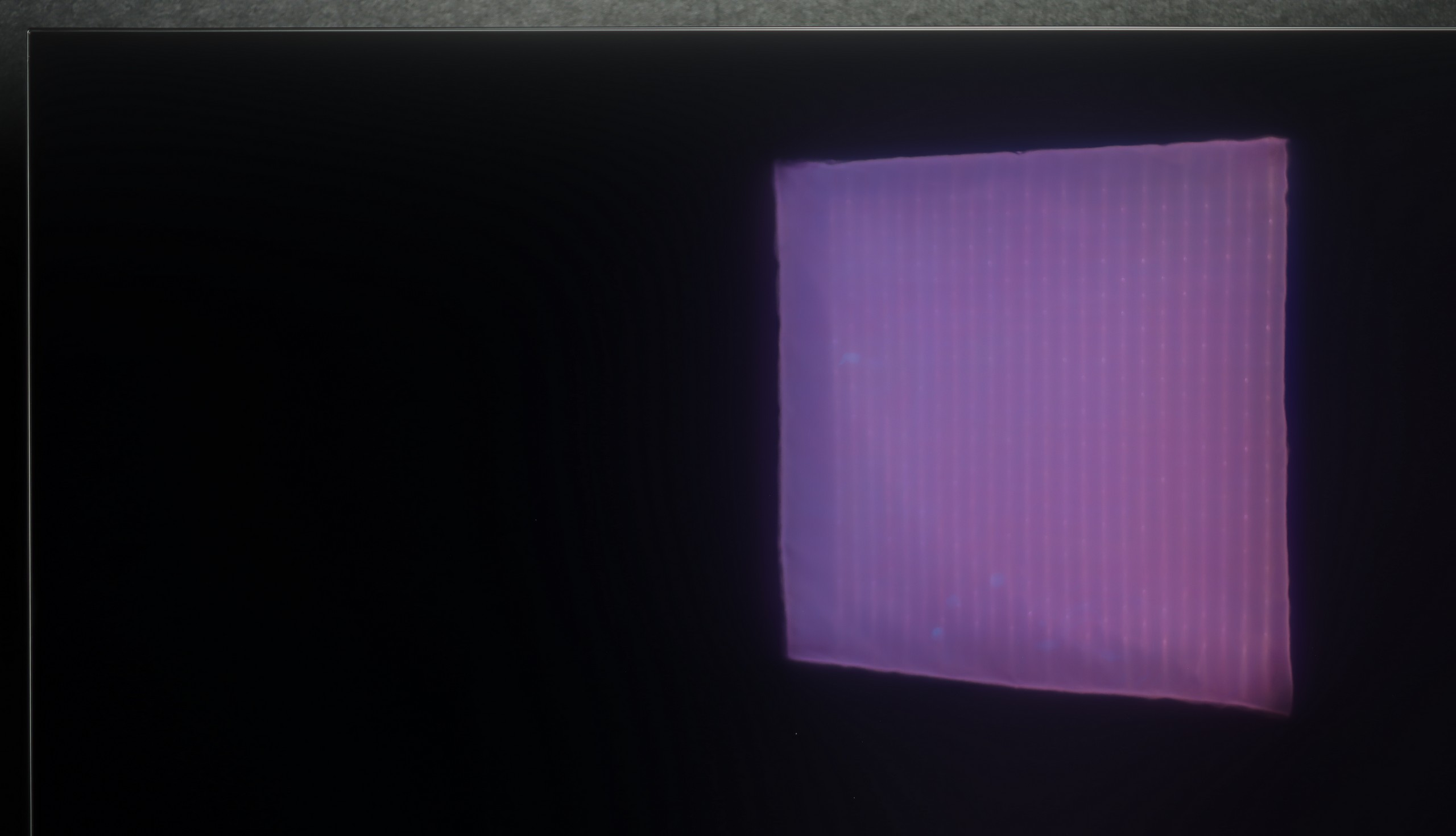
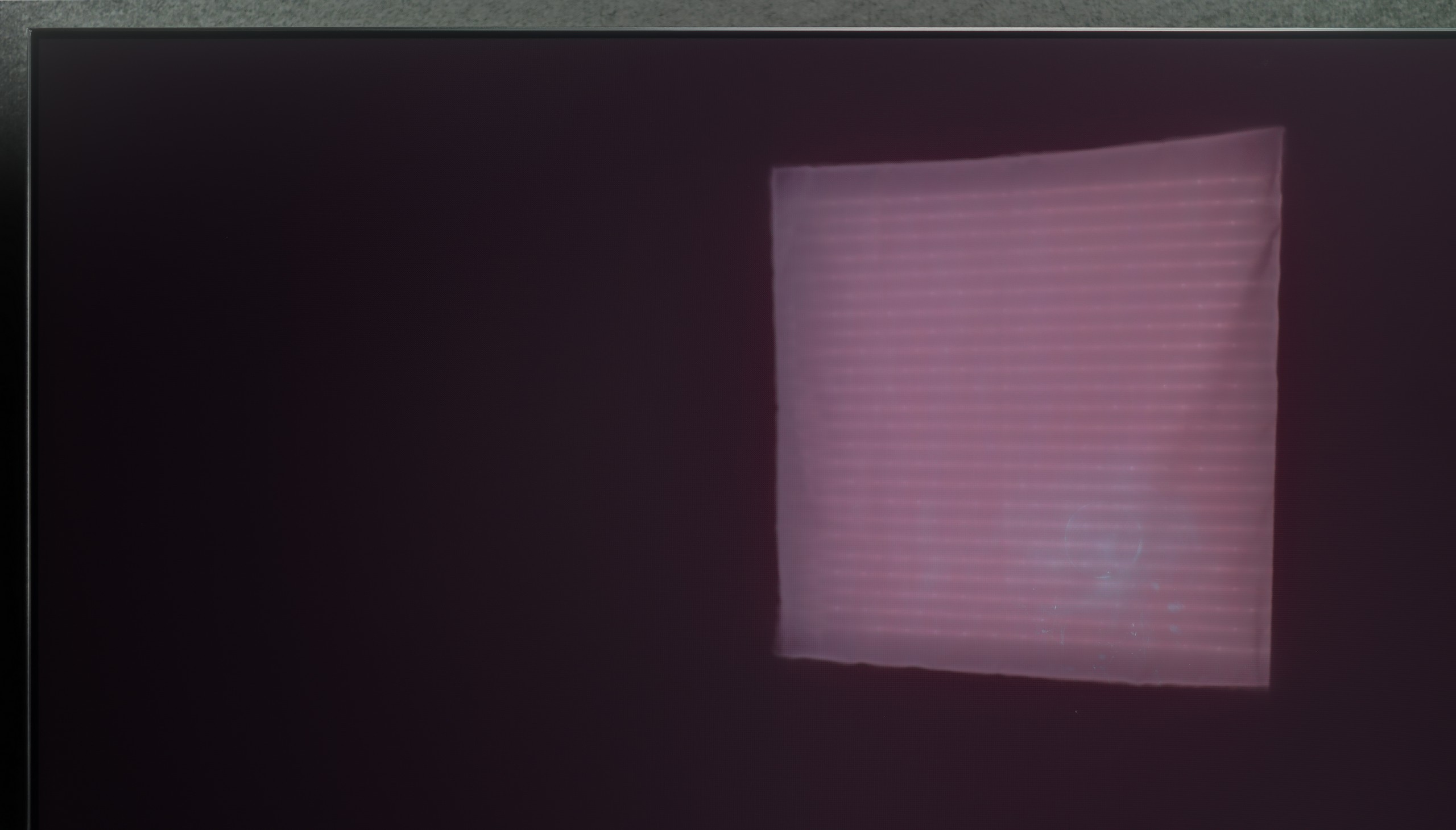
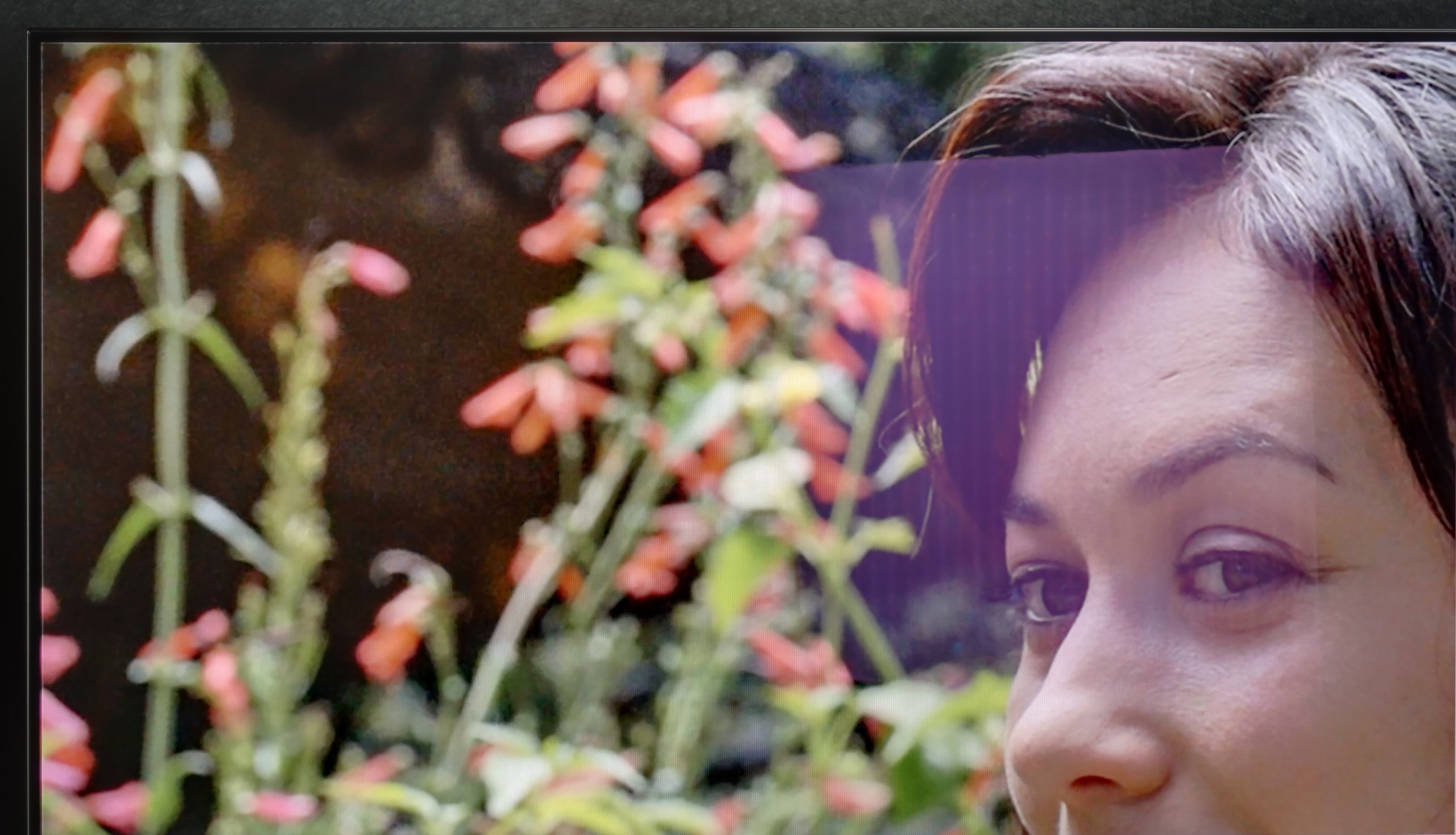
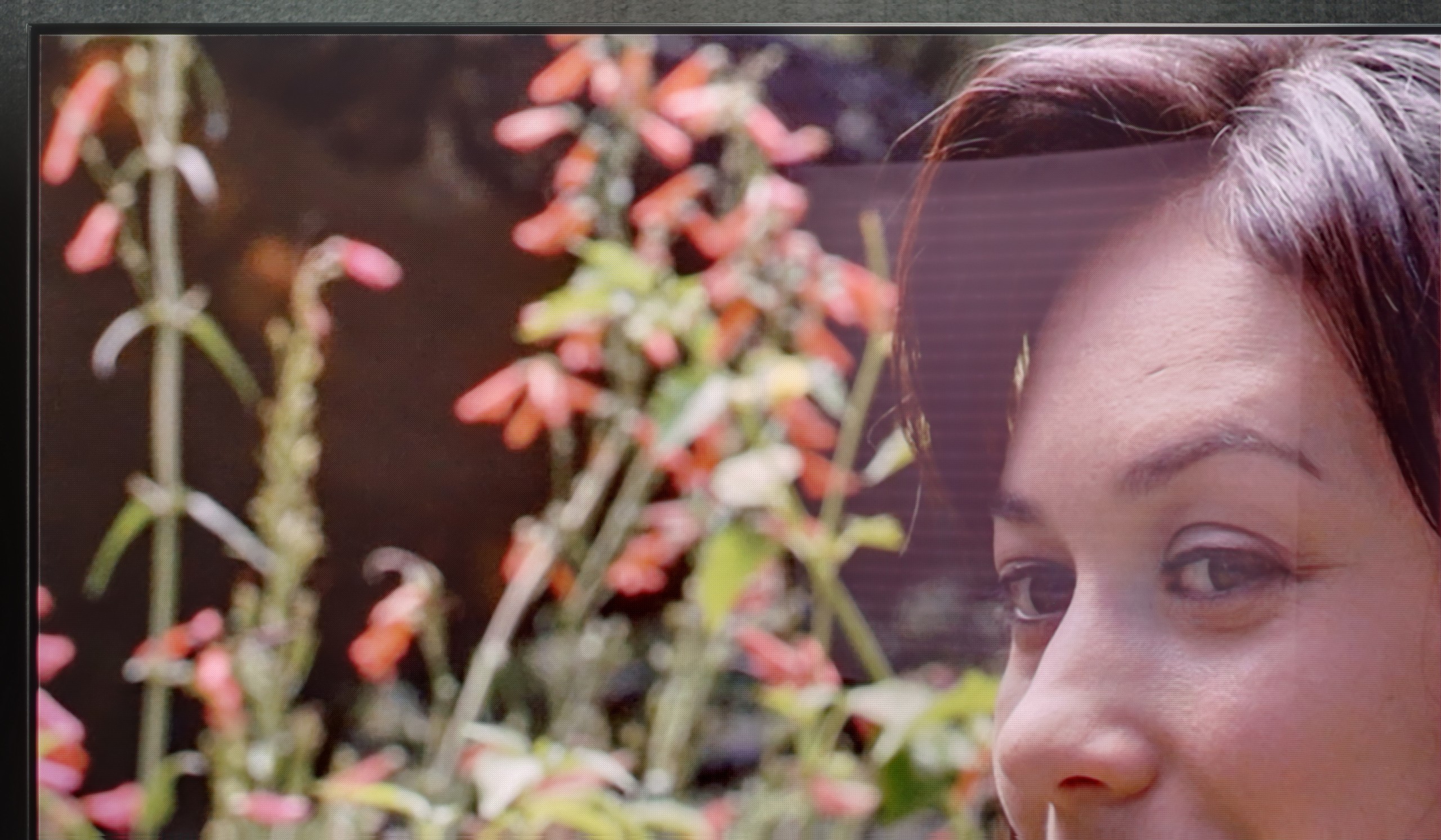
Matrix brightness
Average luminance SDR
Samsung S90F QD-OLED: 431 cd/m2
Panasonic Z95B: 623 cd/m2
The year 2025 is the moment when it can confidently be said that OLEDs are suitable for viewing even in heavily sunlit rooms. The new generation of WOLED panels, used in the Z95B, can achieve truly high brightness – the average value for the Z95B in SDR mode is as much as 623 nits. This is a result that just a few years ago was beyond the reach of this technology. Of course, it is not at the level of the best LCD televisions designed for bright living rooms, and the matrix itself, glossy with a slight filter, struggles somewhat with suppressing reflections. Nevertheless, it is hard to have major objections. The Z95B can easily handle most daytime conditions, and you can comfortably watch television or films even when a lot of light is coming into the room.
QD-OLED panels have their Achilles' heel – it is the reproduction of black in heavily sunlit rooms. The glossy coating used here deals with reflections quite well, definitely better than in the WOLED panels we had the chance to test. The problem is that under very intense daylight, black can take on a dark navy hue and loses its depth. Fortunately, in the evenings, this phenomenon disappears completely and the television shows an image that we expect from OLED – with perfect contrast and true black. As for brightness itself, the S90F performs quite well for a mid-range OLED. In typical conditions, it handles without issue, and the screen will look attractive even in a well-lit living room. It is only in really extreme conditions, when the sun shines directly on the screen, that it may be more challenging, but this is a drawback of all OLEDs in this price segment. On the other hand, better suppression of reflections means that for many people, QD-OLED will prove to be more comfortable for daily viewing than traditional WOLEDs, despite the fact that blacks do not always look perfect on it.
Details about the matrix
Subpixel Structure:
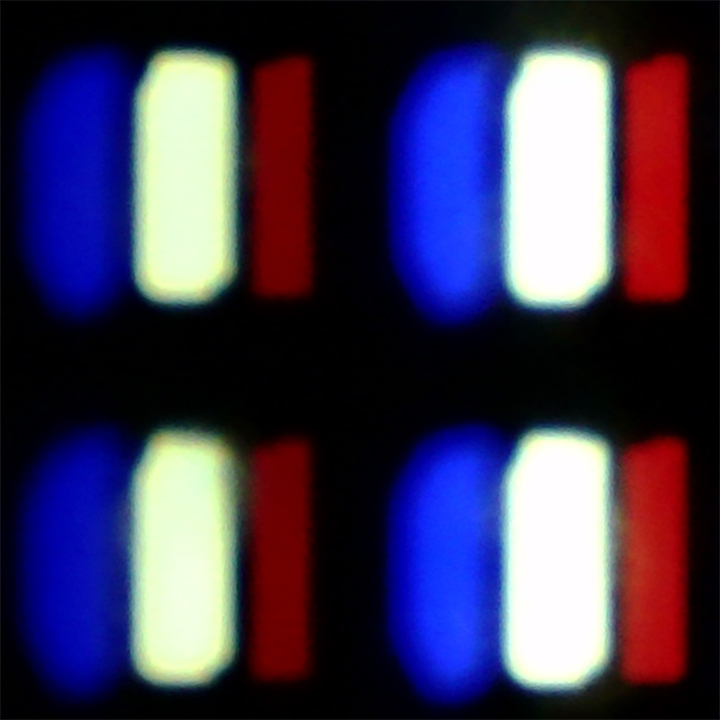
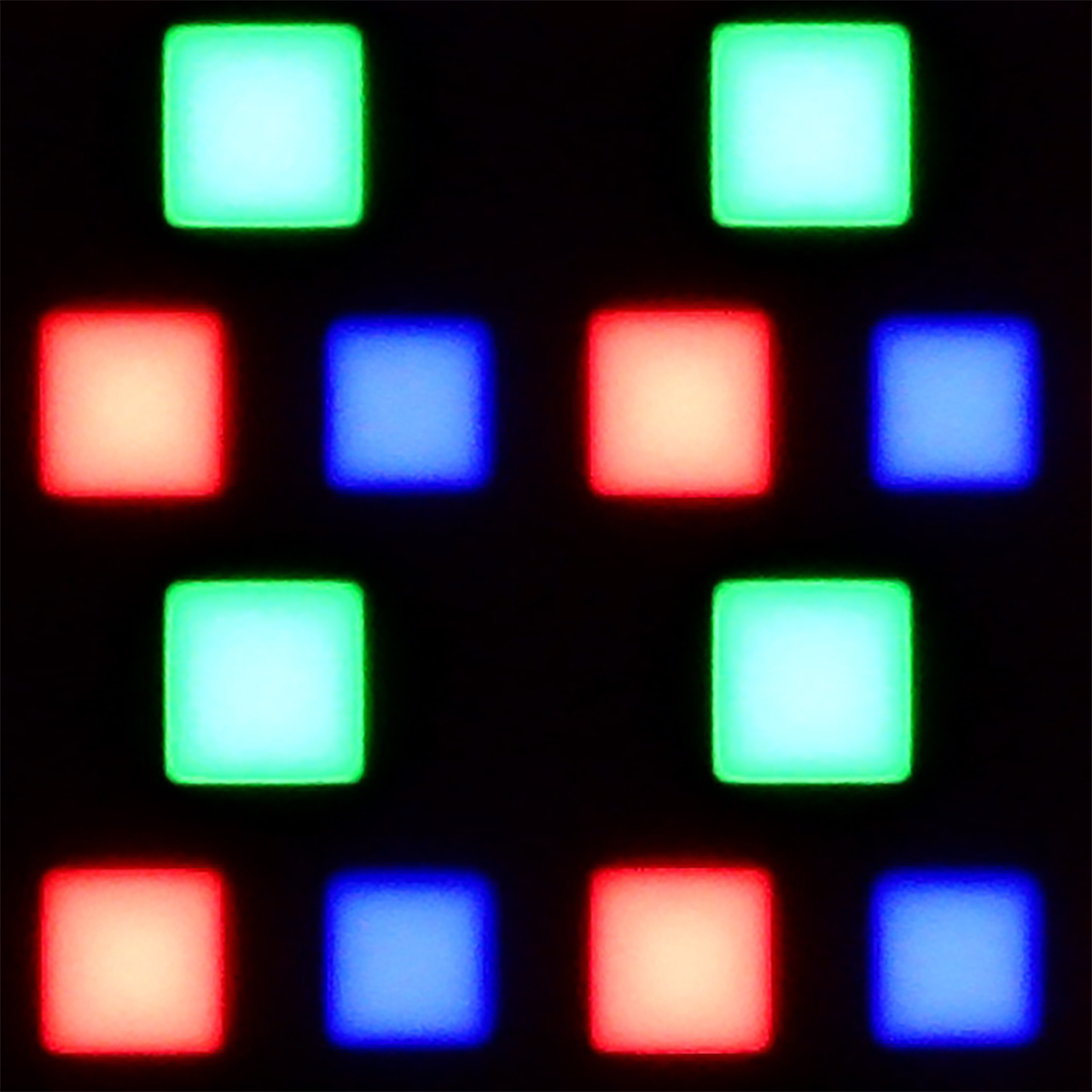
Panel uniformity and thermal imaging:
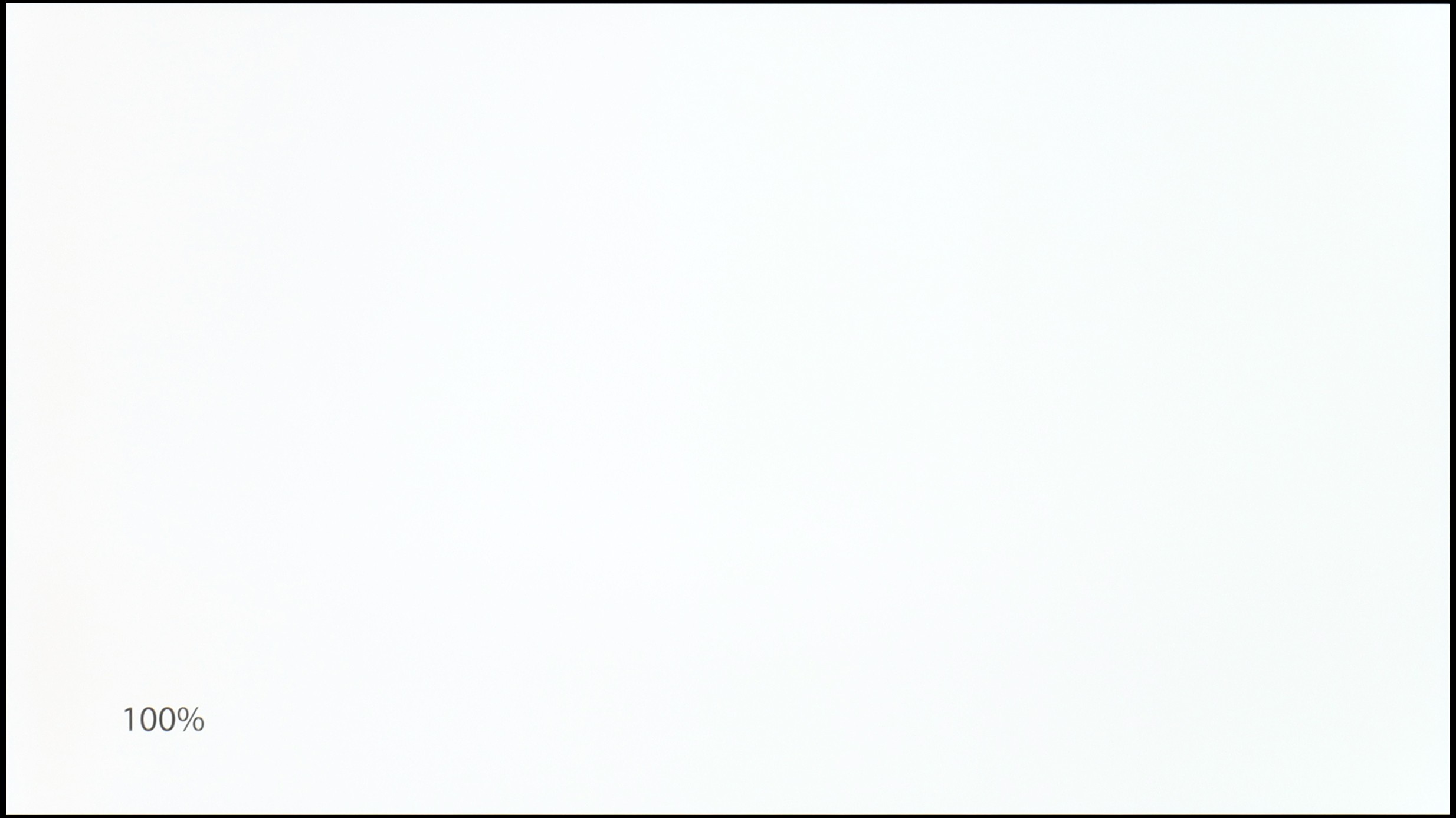

Panasonic Z95B
Samsung S90F QD-OLED
TV features
6.8/10
7.7/10
- HDMI inputs2 x HDMI 2.0, 2 x HDMI 2.1 48Gbps0 x HDMI 2.0, 4 x HDMI 2.1 48Gbps
- Other inputsToslink (Optical audio), IR (remote)
- OutputsToslink (Optical audio), eARC (HDMI), ARC (HDMI), Mini-Jack (Headphones)Toslink (Optical audio), eARC (HDMI), ARC (HDMI)
- Network InterfacesWi-Fi 2.4GHz, Wi-Fi 5GHz, Ethernet (LAN) 100MbpsWi-Fi 2.4GHz, Wi-Fi 5GHz, Ethernet (LAN) 100Mbps
- TV receptionDVB-T, DVB-T2, DVB-S, DVB-S2, DVB-CDVB-T, DVB-T2, DVB-S, DVB-S2, DVB-C
Classic features:
- Recording to USB (terrestrial TV)
- Recording programming
- Picture in Picture (PiP)
- RF remote control (no need to aim at the screen)
- Backlit remote control
- Teletext
- Audio only mode
- Bluetooth headphones support
- Simultaneous Bluetooth headphones & TV audio
Smart features:
- AirPlay
- Screen mirroring (Windows Miracast)
- Voice search
- Voice search in native language
- Ability to connect a keyboard and mouse
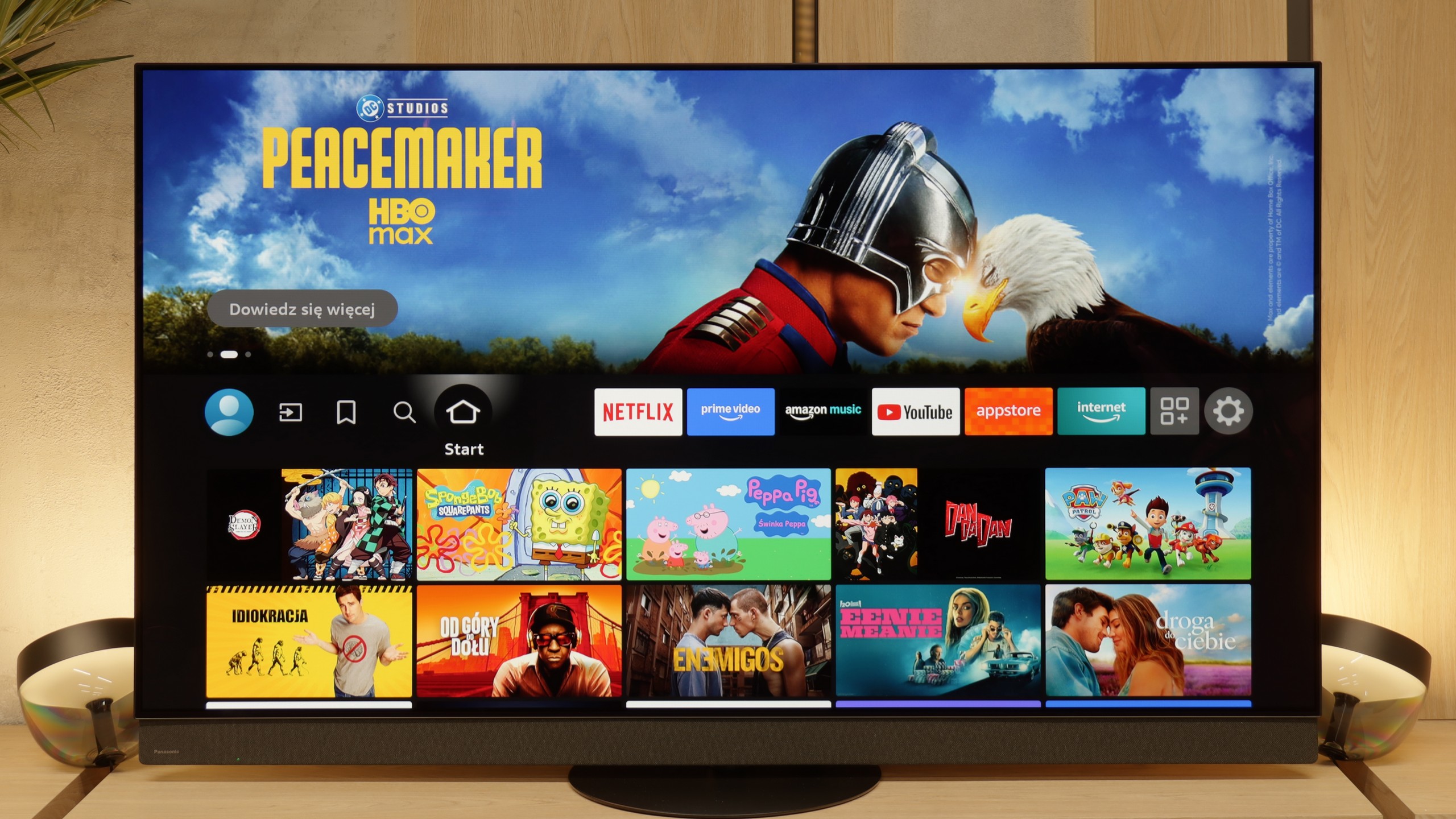
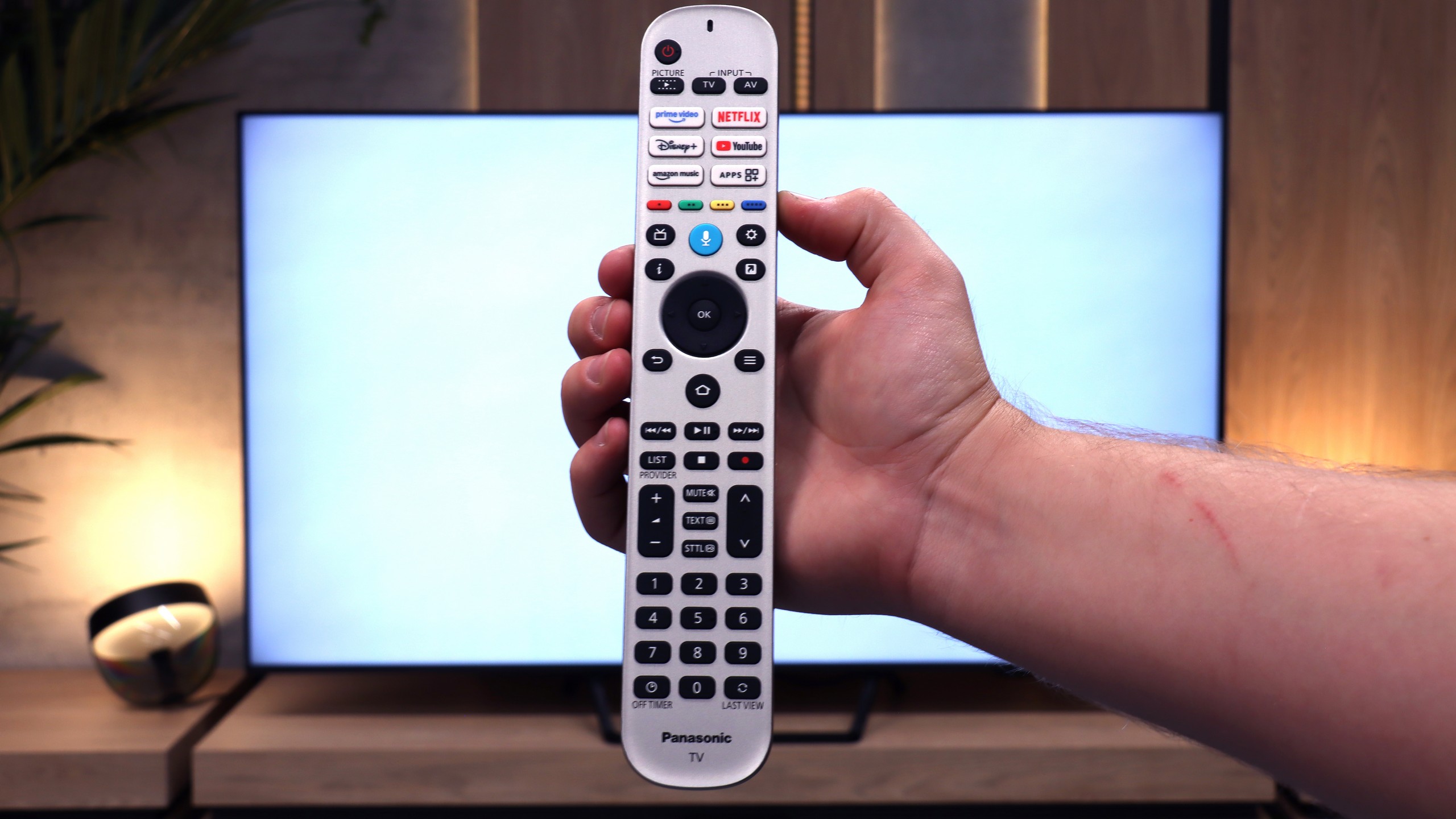
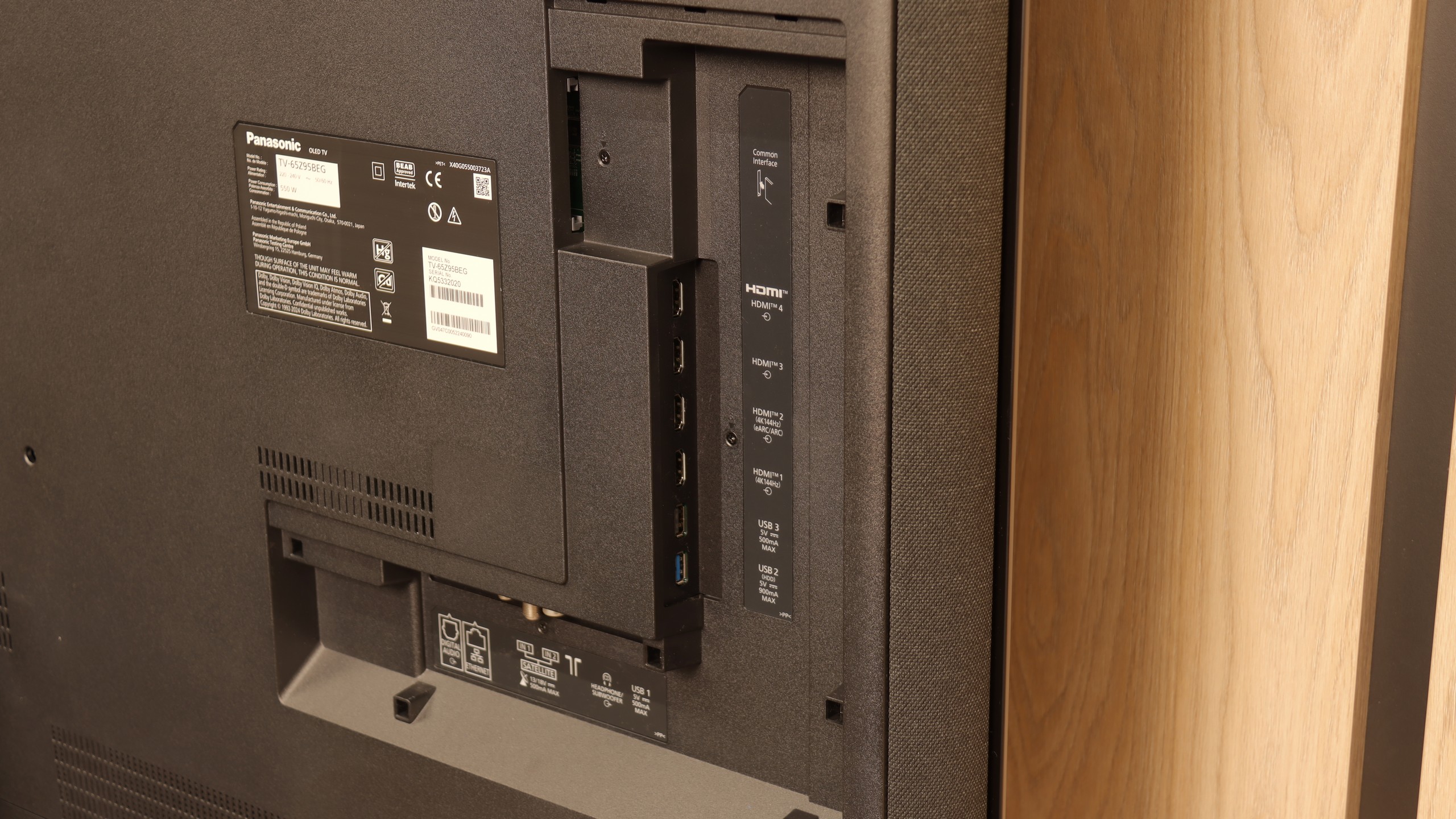
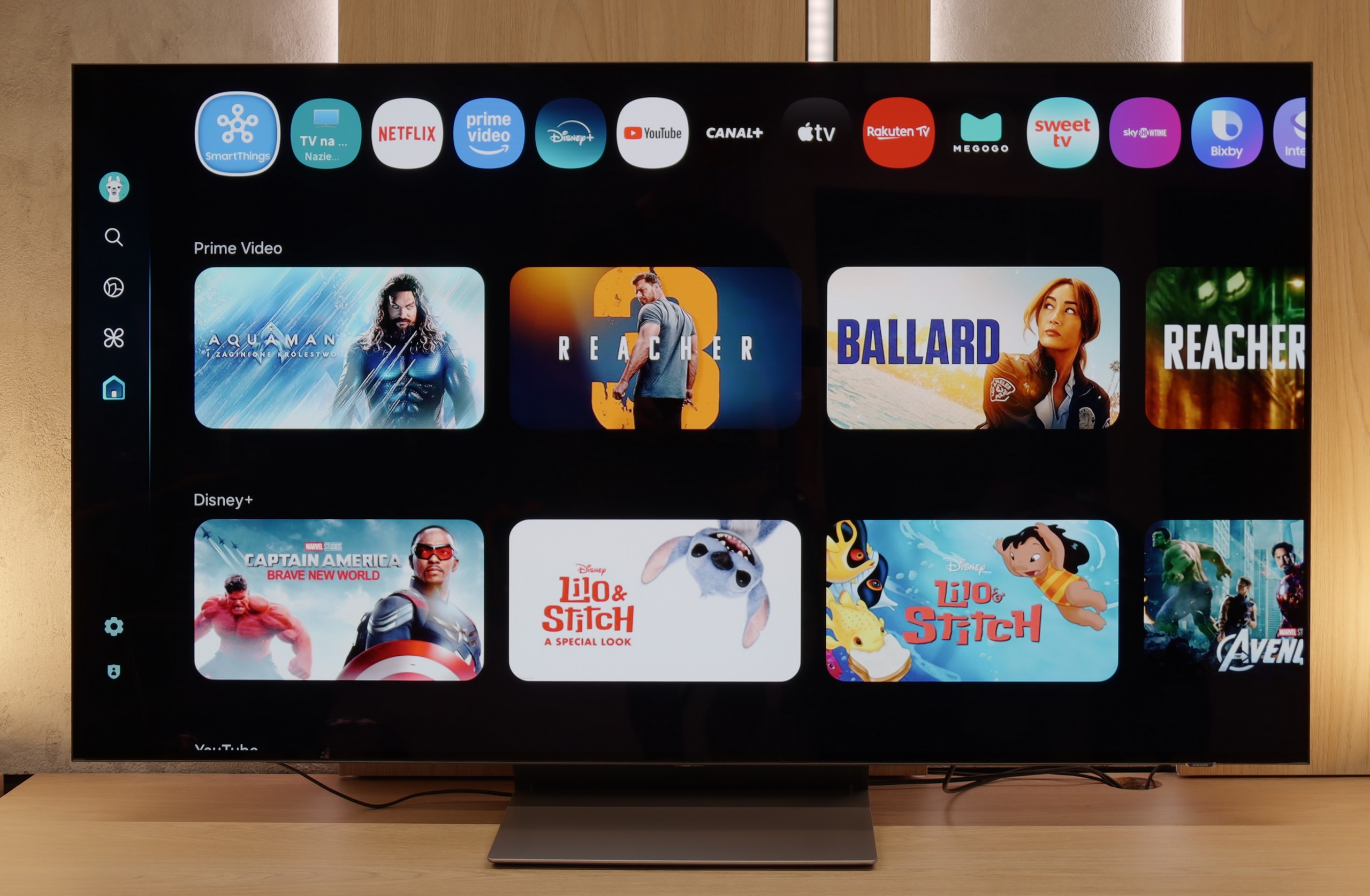
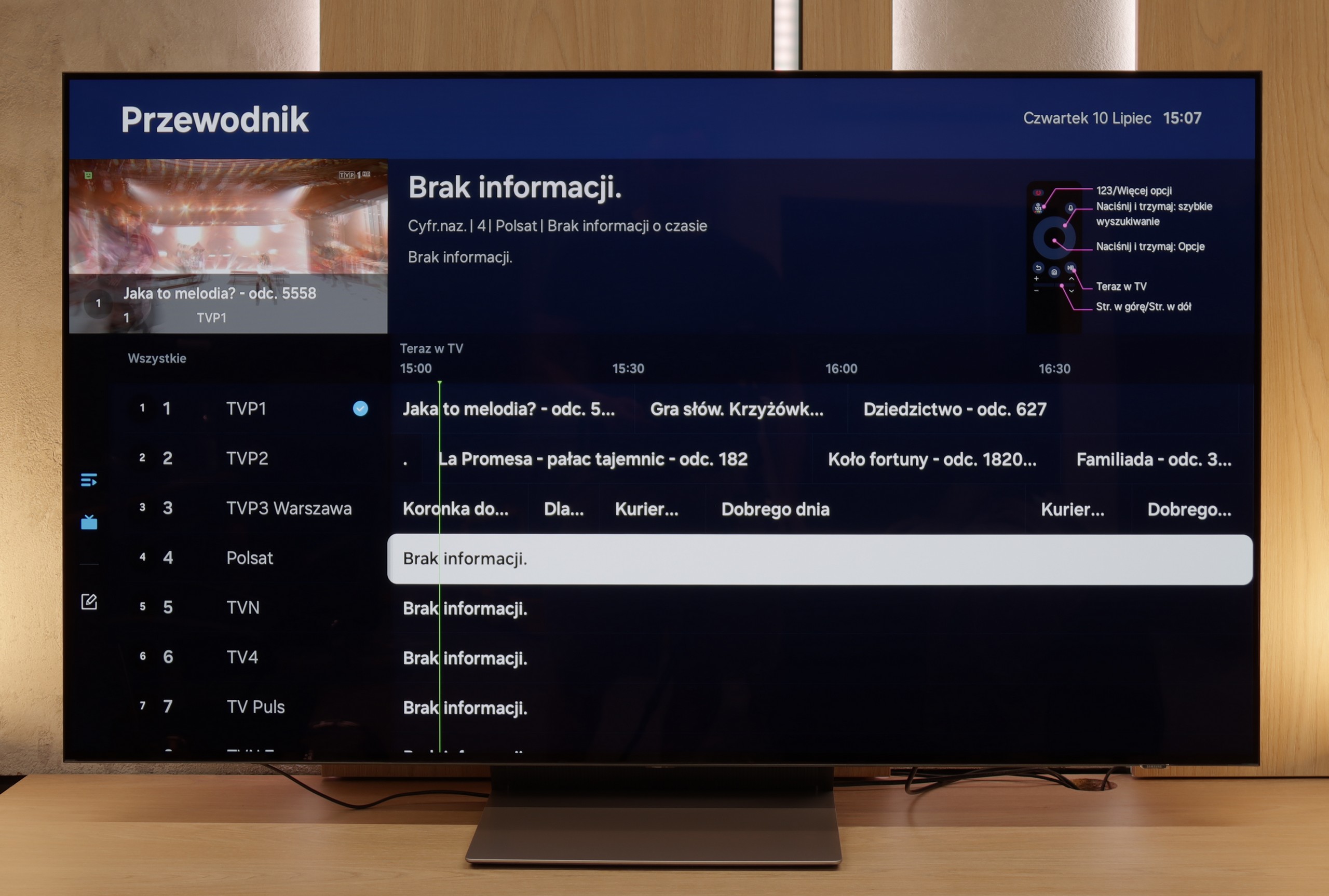
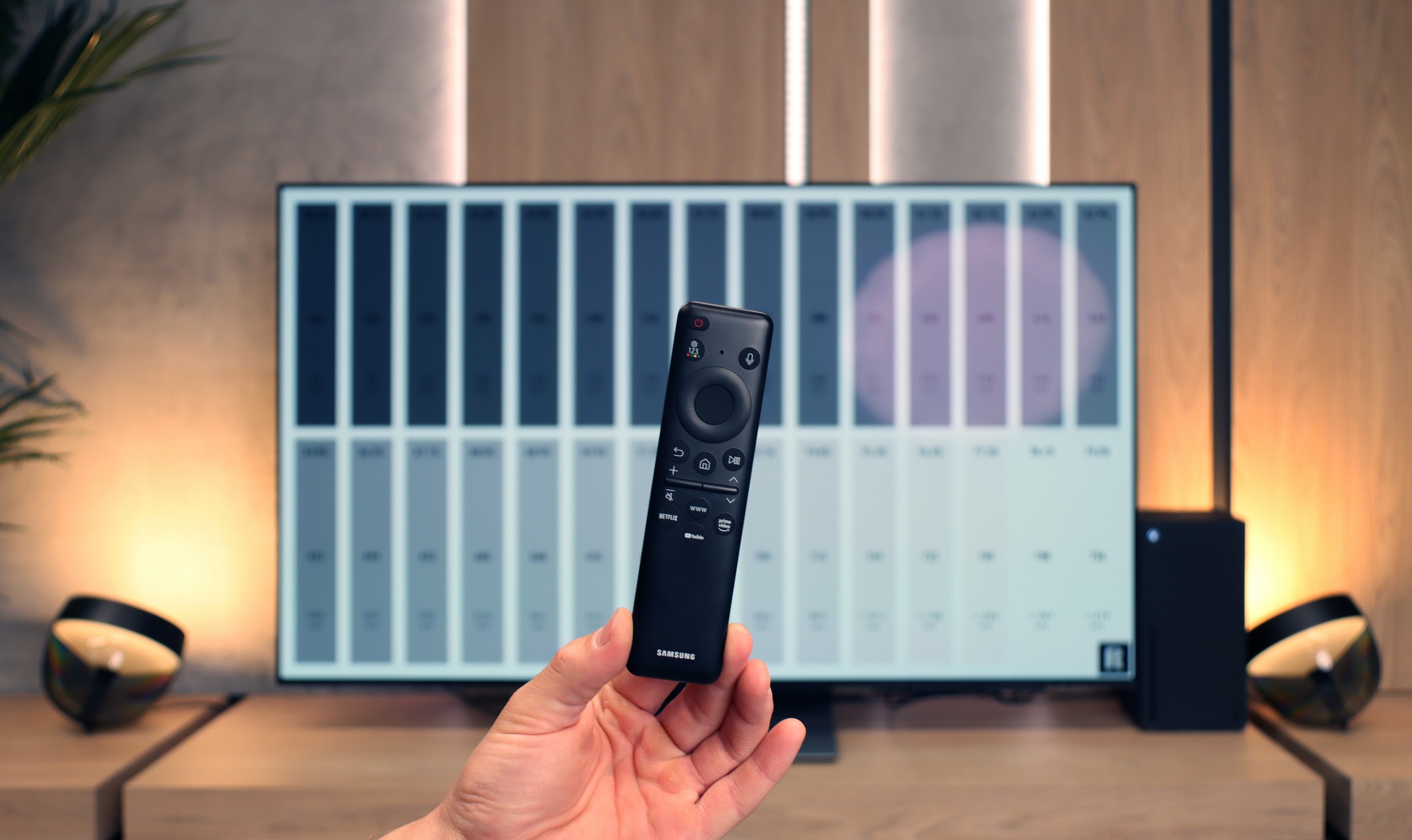
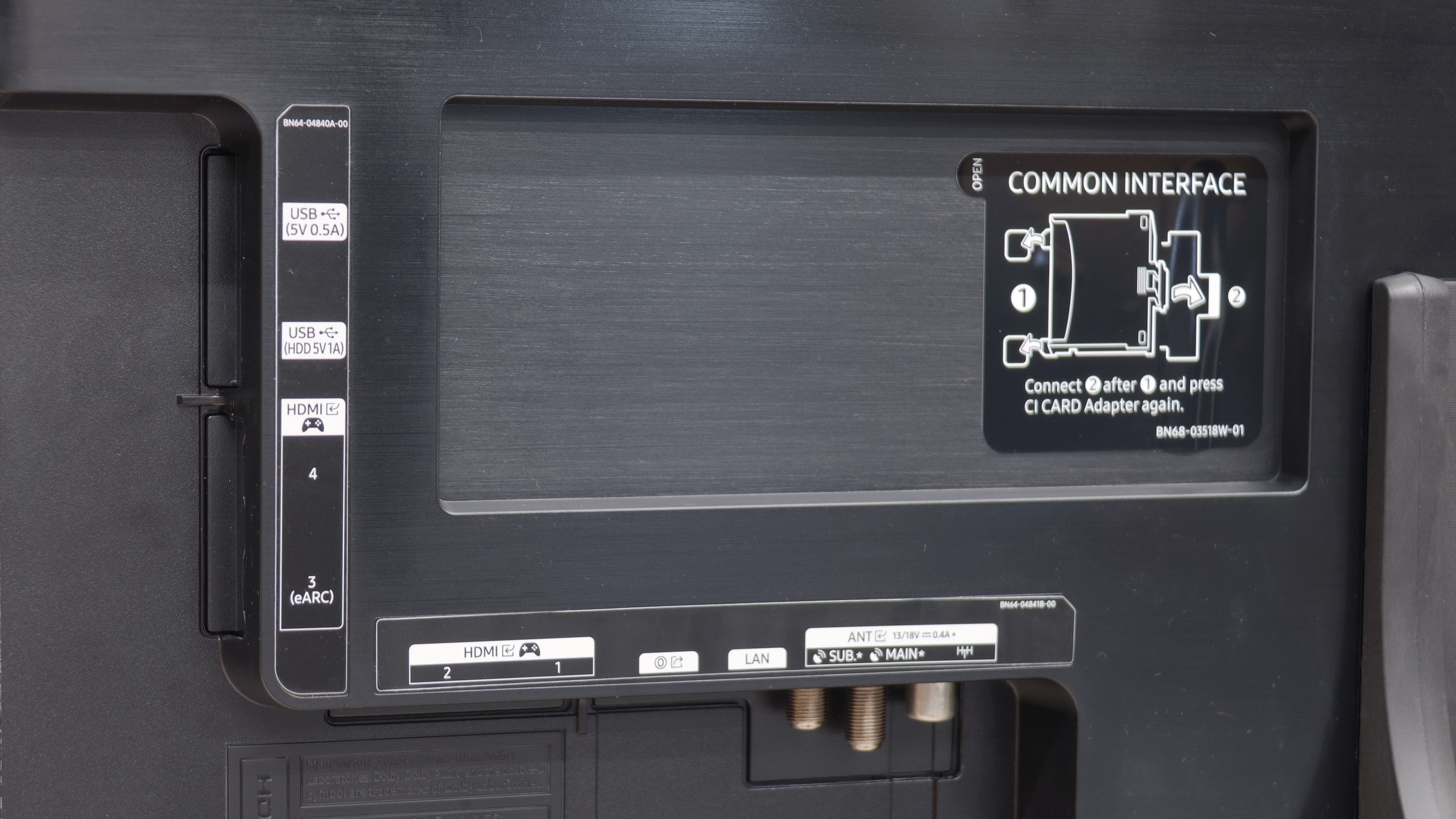
Smart TV: Amazon FireTV
Panasonic in the Z95B uses the Fire TV system, which is a platform created by Amazon. This is quite a change, as just two years ago the company was relying on its own system based on Linux. At first glance, everything looks good – the interface is clear, and the operation is quite simple. Additionally, we have AirPlay, which allows you to stream photos or videos from an iPhone, as well as screen mirroring from both Windows and Android phones. The television also works with the Amazon Alexa voice assistant, but here a significant limitation quickly arises. In practice, only a few of the most popular languages work well, such as English, while Polish is still not available, and it is unclear when it will be.
Classic Features
Here the situation becomes at least odd. During testing in the editorial office, the television would not search for any channels – neither satellite nor terrestrial. As a result, we could not check the operation of the PiP function or the tuner itself. The only certain thing is the recording to USB, as the television immediately asked if we wanted to format it for that purpose upon connecting the pendrive. The remote control looks fairly classic – it is large, with a full numeric keypad, and the advantage is that you do not have to aim at the screen, as it works on RF technology.
Problems in Daily Use
The biggest disappointment, however, arises with the apps and system stability. Some apps are not available at all in Poland, others can be found but cannot be downloaded as they are tied to a specific market. Additionally, there are odd bugs, untranslated menu elements, and occasional "hangs" that can effectively detract from the enjoyment of using such a good screen as the Z95B. One could say that while the Z95B impresses with image quality as a "monitor", as a smart television it can be simply frustrating and falls short in many aspects.
SmartTV Features: Tizen.
A major advantage of the S90F in daily use is the Tizen operating system. It is one of the fastest systems on the market and has been working exceptionally well on Samsung televisions for years, and on higher-end models like this one – it works instantly. The menu responds without delays, switching between apps is smooth, and the whole system is intuitive enough that even someone encountering Smart TV for the first time can navigate it easily. In the app store, we can find practically everything needed – from Netflix to HBO Max, as well as less obvious services. Perhaps GoogleTV is not available here, but in reality, there is no sense that something is lacking. A big plus is the integration with SmartThings. This solution is for those who like to have their entire home under control in one app. The television can be part of the IoT device ecosystem and easily communicates with the washing machine, air conditioning, or lighting, as long as everything is on the same network.
Classic Functionalities
When it comes to classic functionalities, we have everything one could expect: support for HDMI 2.1, USB ports, optical output, and connectivity via Wi-Fi and Bluetooth. The only thing that might be lacking for more conservative cinema fans is support for DTS:X audio formats – especially if someone watches films on physical media. The remote control may initially seem a bit strange, as it lacks traditional number buttons. But this is now standard in today’s television world, and most users adapt to it quickly. A plus is that it works completely wirelessly. The point is that you don’t need to aim at the screen, you just have to press a button on the remote from anywhere (even in another room), and the television responds to our actions.
Playing files from USB
3.5/10
9.1/10
Supported photo formats:
Maximum photo resolution:
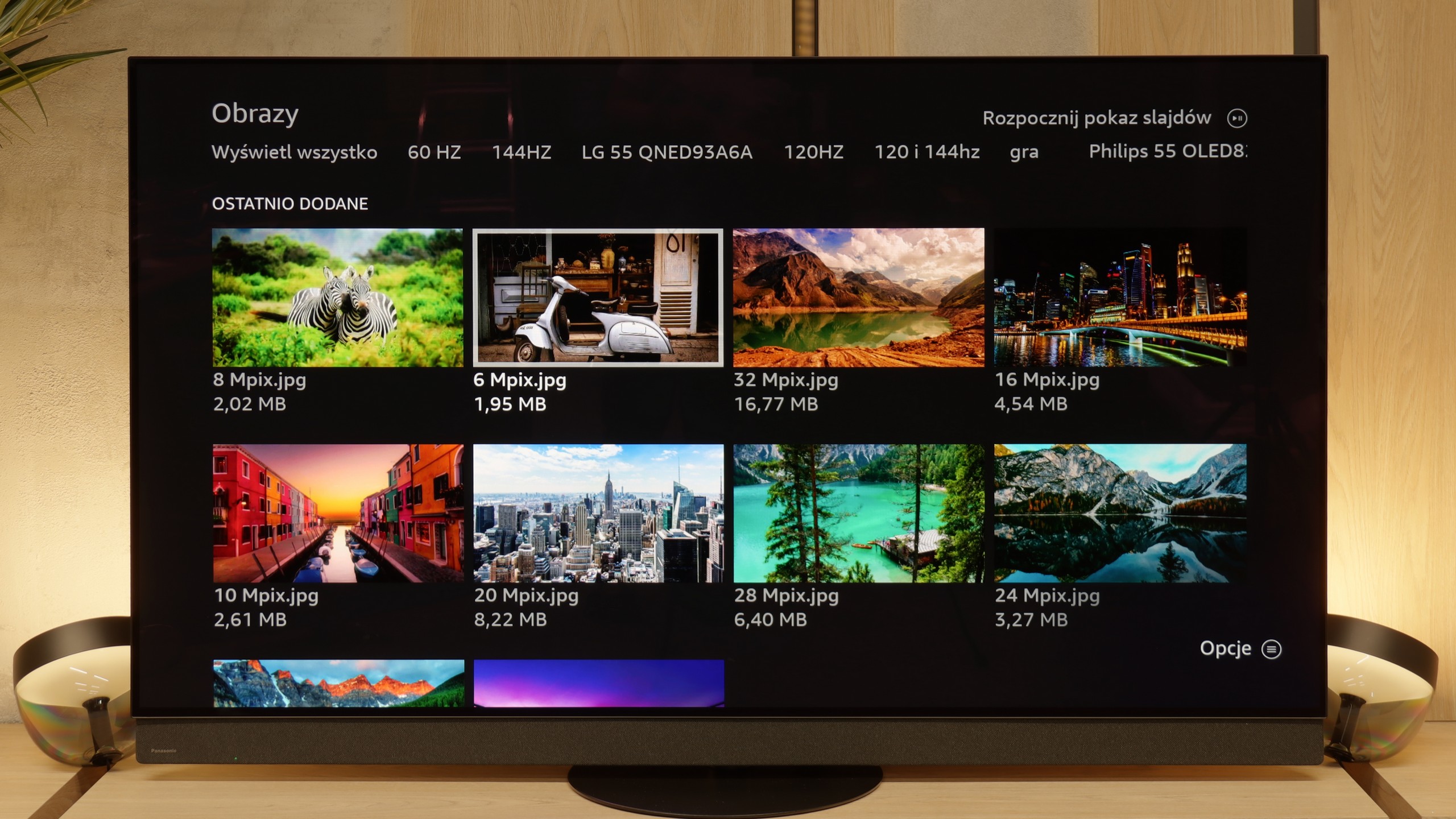
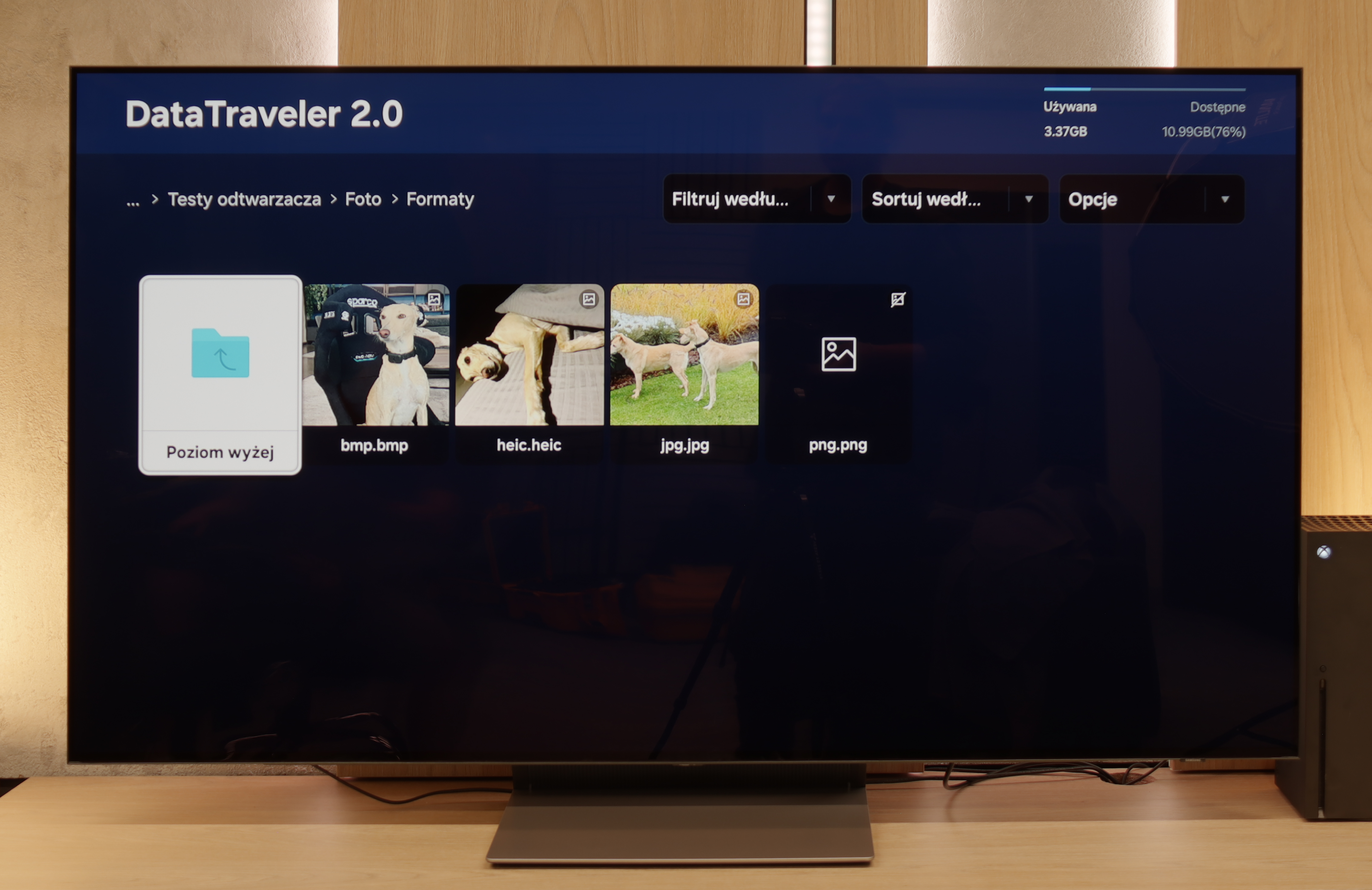
Here we also encountered another limitation of the Fire TV system. The built-in player handles popular audio and video files without any problems, so at first glance, everything seems fine. However, the problem arises when we want to enable subtitles in films. We were unable to activate any format – neither .srt, nor .sub, nor .txt. Regardless of the settings, the subtitles simply did not appear. So, if you have a film with a separate subtitle file, you are forced to watch it in the original language, unless the subtitles were permanently embedded in the picture. For a television of this class, it is quite a disappointment and further evidence that Fire TV still has a lot of shortcomings that can spoil the joy of use.
The built-in player in the S90F works really well and is sufficient for most users. It easily opens films or music stored on a USB drive or external hard drive and handles most popular formats. The only "more serious" issue we encountered was the lack of support for HEIC photos – those that can be saved by an iPhone. (Although we suspect that 90% of users are still using the JPEG format).
Apps
7.2/10
8.7/10














































Sound
8.9/10
7.4/10
- Maximum volume91dB84dB
- Dolby Digital Plus 7.1
- Dolby True HD 7.1
- Dolby Atmos in Dolby Digital Plus (JOC)
- Dolby Atmos in Dolby True HD
- DTS:X in DTS-HD MA
- DTS-HD Master Audio
The built-in audio system in the Panasonic Z95B really makes an impression. The manufacturer has added an additional soundbar here, which completely changes the sound experience of the television – this time it can confidently be said that there is no need for any external equipment to enjoy full and dynamic sound. The bass is clear and surprisingly powerful, dialogues remain intelligible even during louder action scenes, and the television itself can play quite loudly, reaching levels of up to 91 decibels. It should also be noted that it fully supports Dolby Atmos, so if you use films or streaming services that support this format, you can count on spacious and impressive sound. A certain limitation is the lack of support for DTS:X – if someone plans to connect a home cinema or Blu-ray player with this standard, they must take into account that the television will not play it, but this shouldn't be a major drawback considering how all manufacturers approach this standard. I suppose we have to come to terms with this.
The S90F plays really nicely for a television – the bass is noticeable, the dialogue sounds clear, and the overall dynamic is quite good. Dolby Atmos also does its part, as it can add a bit of space to the sound, making movie watching better than in most basic built-in sets found in other televisions. However, it must be stated clearly: no television, even of this class, can replace a separate sound system. If someone really wants to feel like they’re in a cinema, the best solution would be to purchase a soundbar or a full audio system. Especially since, as is often the case with Samsung, there is a lack of support for DTS:X – so fans of Blu-ray discs and high-quality soundtracks will still have to reach for external equipment connected directly to the source.
Acoustic Measurements
91dBC (Max)
75dBC
84dBC (Max)
75dBC


